Plants
(including flowers & drift-seeds)
INDO-PACIFIC Tropical Seashore
The plants of the tropical seashores are some of the most widespread species on the planet Earth. You will often see the same species over and over again from the east coast of Africa, across tropical Asia, and all the way to the most remote islands of eastern Polynesia. Learn and identify these species, and you can be clever all over the world!
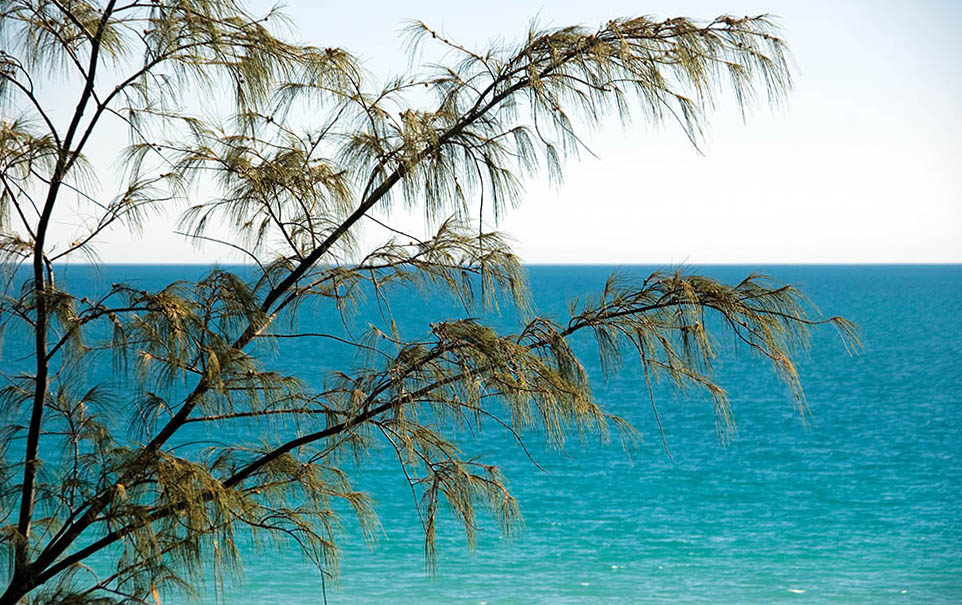 (Casuarina, Broome)
(Casuarina, Broome)In an ecological sense, there are two main groups of plants that live along the seashore, which correlate with the two very different sides of the habitat. There are the plants that live in the ocean itself, or at least regularly “get their feet wet”. This includes the true marine groups, such as many seaweeds, as well as the sea grasses (to be covered in the section on Coral Reefs), and the intertidal plants, such as the mangroves (covered in various sections such as Australasian Mangroves and Indo-Malayan Mangroves). Then there are the land based plants that are covered here, many of which have adapted to live right on the seashore sand or rock, where they are exposed to sun, wind, and salt. There are many species that are characteristic of the tropical seashore, such as Goat's Foot Morning Glory, Beach Almond, Pandanus, and of course Coconut.
Order Laurales
Family Hernandiaceae
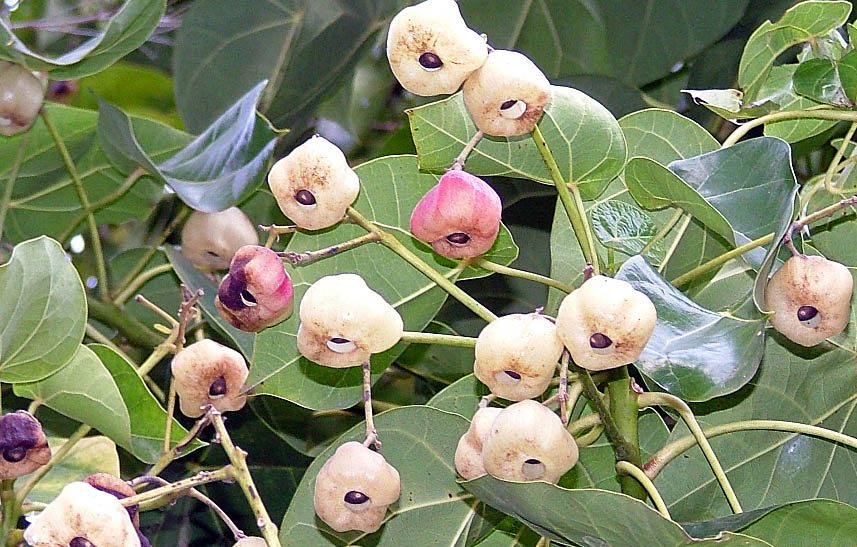
Hernandia nymphaeifolia, 'Chinese Lantern Tree'. Small tree. Heart-shaped leaves, with stem joining slightly in from edge, with the lighter veins spreading out from the attachment (scientific name means the leaves are water-lily like). White fragrant flowers. Fruits unusual and instantly recogniz- able; a ribbed, dark brown almost black nut, which is enclosed in a roomy cover rather like a lampshade (the old fashioned ‘sea hearse’ name refers to the outer fruit covering suggesting a shroud around a carved coffin, the seed). Plant used in indigenous medicine and has been found to have potential against tumor cells. Found in forest, on rocky shores, beaches, throughout tropical Indo-Pacific, including across northern Australia.
Family Lauraceae
There are about 17 species in this genus, and they are found mainly in the old world tropics. It is an unusual genus within the Lauraceae, for they do not grow as large trees like most species in the family, but as twiners. They are hemi-parasitic and usually lack any obvious leaves. On the stems develop tiny flowers and small round green to pale fruits.
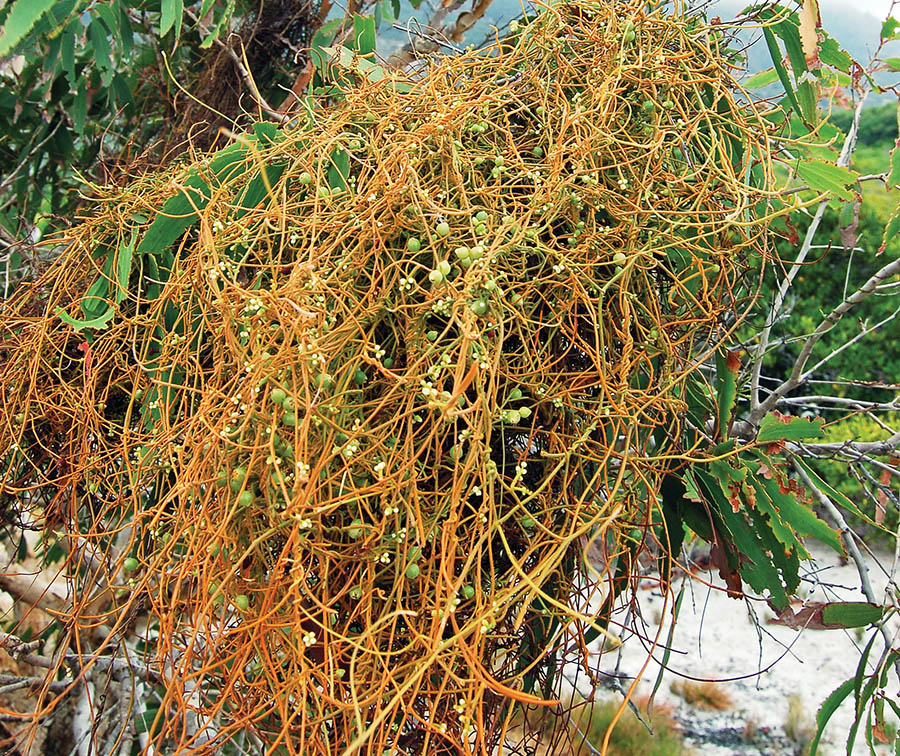
Cassytha filiformis , 'Dodder Laurel', 'Devil's Guts'. Pantropical. Leafless orange-stemmed climber that grows draped over other plants. Tiny white-yellow flowers and light green fruits.
Order Discoreales
Family Taccaceae
This family contains only one genus.
Tacca spp.
This genus has some 11 species. They are centred mainly in tropical Asia and the Pacific islands, but are found in Australia and across the Indian Ocean to Madagascar.
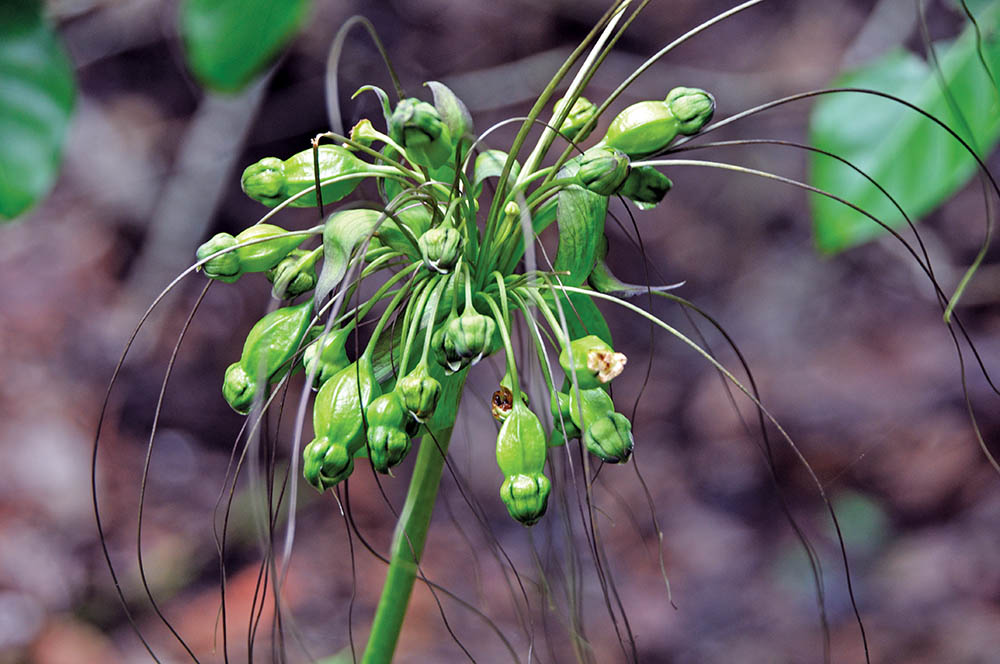 (Daintree, Australia)
(Daintree, Australia)Tacca leontopetaloides , ‘Arrow- root’. Very short bush. Heavily lobed leaves. An erect stalk sprouts from the middle of the plant, where the flowers appear often surrounded by strange long hair-like bracts. Followed by a hanging bunch of shiny green ribbed fruits. Plant is found along and just behind various coastal habitats throughout the tropics of the world. The starchy tuber from this plant provides arrowroot. The stalk that holds up the flower is used as a fibre.
Order Asparagales
Families Amaryllidaceae
This group contains a range of ornamental plants, such as the various daffodils, and the ‘crinum lilies’ (the ‘true lilies’ are in a different order).
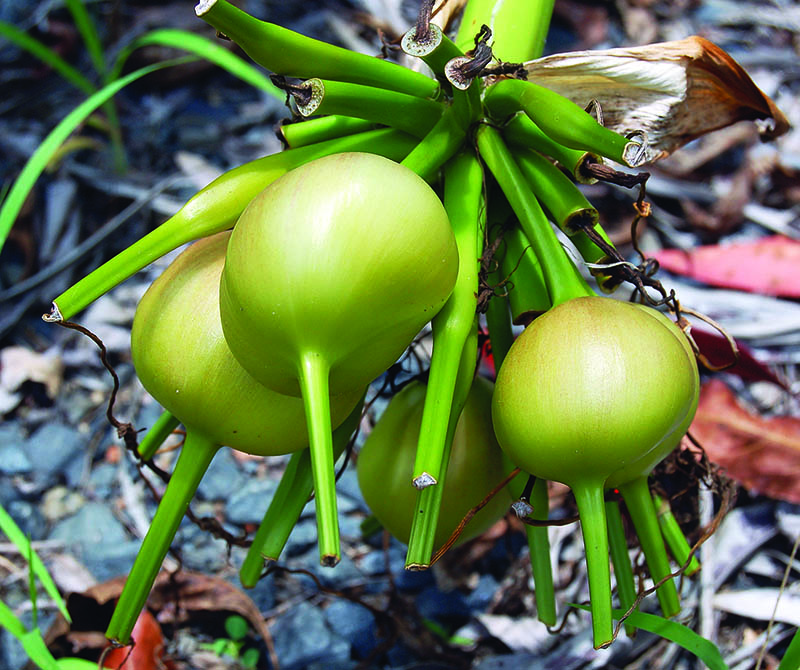
Crinum pedunculatum, ‘Crinum Lily’, ‘Mangrove Lily’. Short shrub. Large, long leaves with longitudinal veins. Fruits are unusual, almost onion like; green and round, with elongated pipes at end. These split to drop angular semi-circular seeds that are a green- tinged white with an almost styrofoam like surface. They are ocean dispersed, and thus sometimes seen washed up on tropical beaches. Indigenous uses include the crushed up plant used to alleviate box jellyfish stings, and fibrous parts of plant trailed behind moving boat as a lure to catch fish such as mackerel. Usually found only at sea level, and in amongst mangroves, forest, woodland, and beaches along subtropical and tropical east coast of Australia, across the top to the NT, to New Guinea and other tropical Pacific Islands.
Order Pandanales
Family Pandanaceae
This distinctive family has 3 genera with 800-900 species, found in tropical Africa, Asia, Australasia and the Pacific. Members of the family include either trees or shrubs of the genus Pandanus, or climbers of the genus Freycinentia. They all have long, strap like leaves, usually with toothed edges. Many species grow unusual roots, such as stilts or ‘brace roots’ off the trunk or limbs. They grow mainly in forests and along coasts in the Old World tropics.
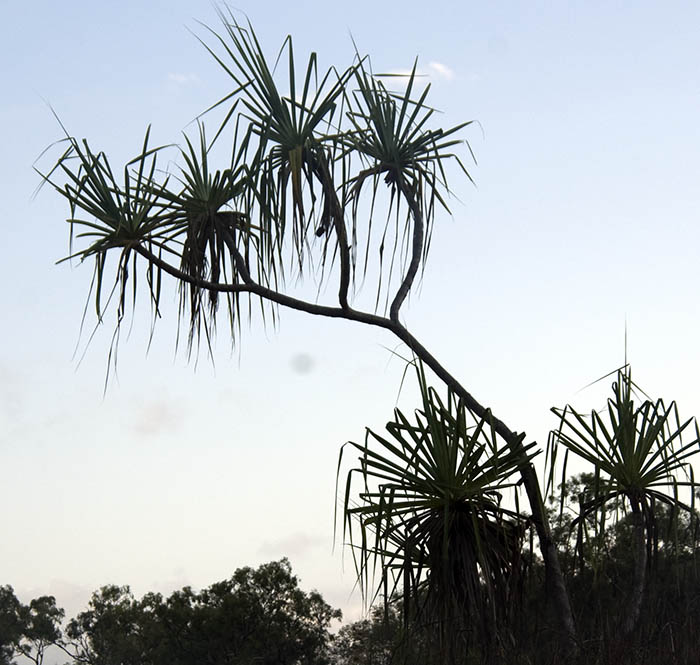
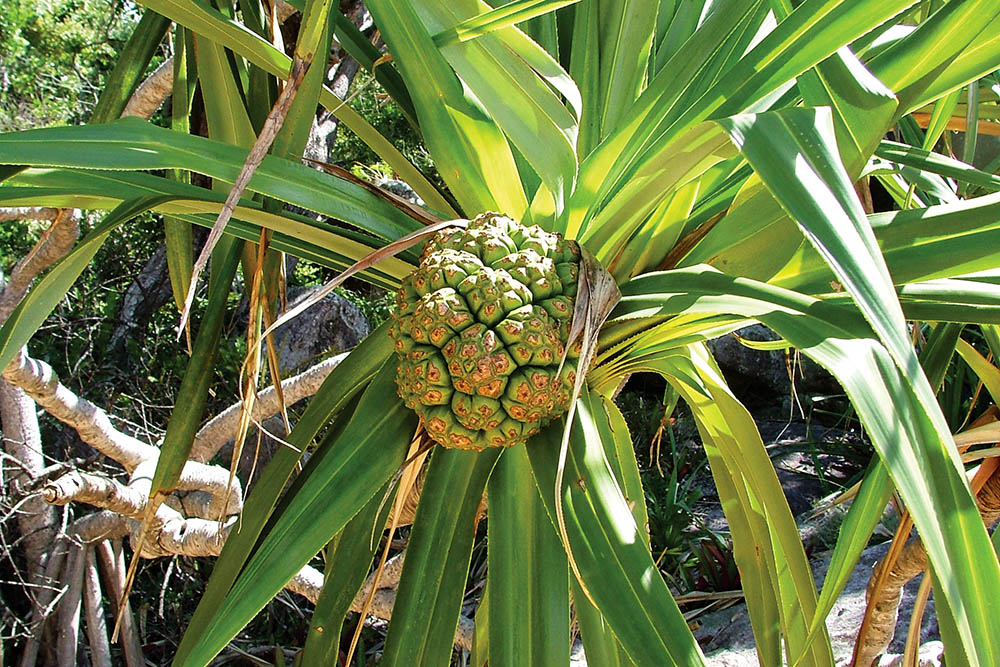
Pandanus spp.
This is the main genus in the family with about 500-600 species, found mainly in the old world tropics. Pandanus are one of the most distinctive and common plants along tropical coasts. They grow slim, almost spindly trunks, superficially rather like a palm, to which they are not closely related. Many species develop stiff prop roots which grow out from the base like tripod legs. Taller, older trees may end up with many roots to a metre or two in height. The long strap-like leaves have spines along the edge, and when they fall they persist for some time, making them ideal material for thatching. The fruits that develop are large and aggregate, almost pineapple like, made up of segments that drop to the ground when ripe. The species of Pandanus along the Australian tropical coast have woody segments, and these wedge shapes are very common along the tropical beaches of Australia. The fruits are edible in several ways. The juicy fibrous ends can be sucked, although this tends to irritate the throat. Each segment also holds a kernel which can apparently be extracted and tastes ‘deliciously nutty’; but good luck trying to open them up! These kernels provided a fat and energy rich food source for Aboriginal people. If the segments wash up later on shore, they are brown, and the fibrous end looks rather like a shaving brush.
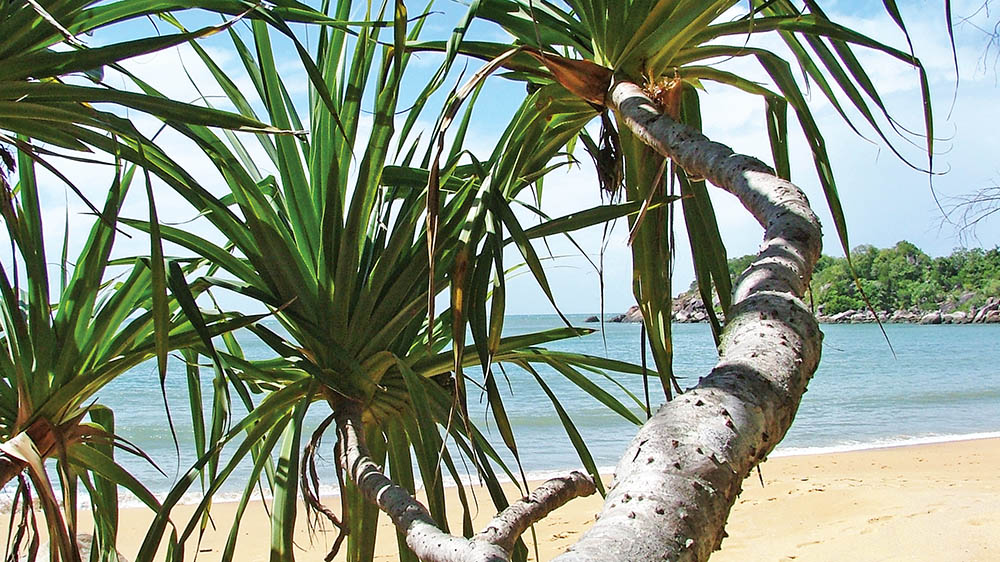 (Hinchinbrook Island, Australia)
(Hinchinbrook Island, Australia)Pandanus tectorius ‘Beach Pandanus’, ‘Pandanus Palm’. One of the most common and widespread of the Pandanus. Trunks often covered in spikes. Dropped segments of fruit are eaten by various animals, including cassowary. Found along the east coast of tropical Australia, into New Guinea, and the south-west Pacific islands.
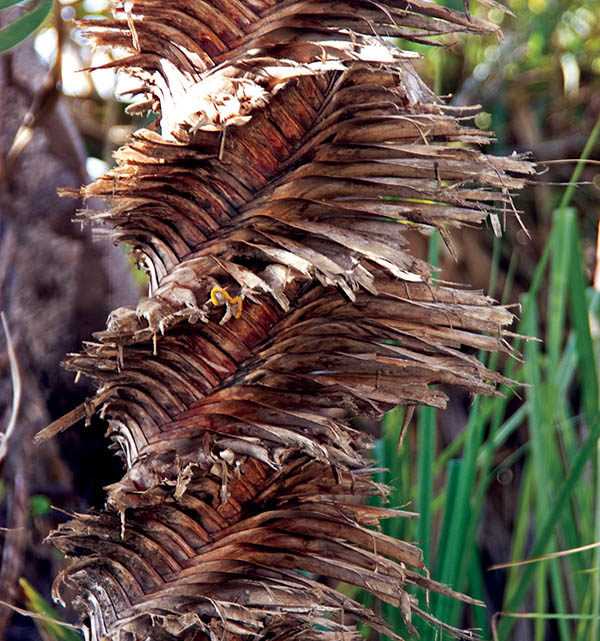 (Kimberley, Australia)
(Kimberley, Australia)Pandanus spirilis ‘Spiral Pandanus’, ‘Screw Palm’. One of more distinctive species of Pandanus, due to way trunk twists in a spiral as it grows. There always seems to be many dead long brown leaves hanging from the base of the living leaves. The wedge shaped fruit segments are wider than those off Beach Pandanus. Found in a variety of habitats; wetlands, woodlands and coasts, across tropical Australia and New Guinea.
Order Arecales
Family Arecaceae: Palms
With at least 2,500 species of what we call ‘Palms’, this is one of the biggest and most recognizable of plant families. Only a few species are common on the sandy shores, but among them is the most famous of palms, and indeed the best known and most recognizable of all tropical beach plants, the Coconut.
Cocos sp.
There is only one species in this genus, the Coconut.
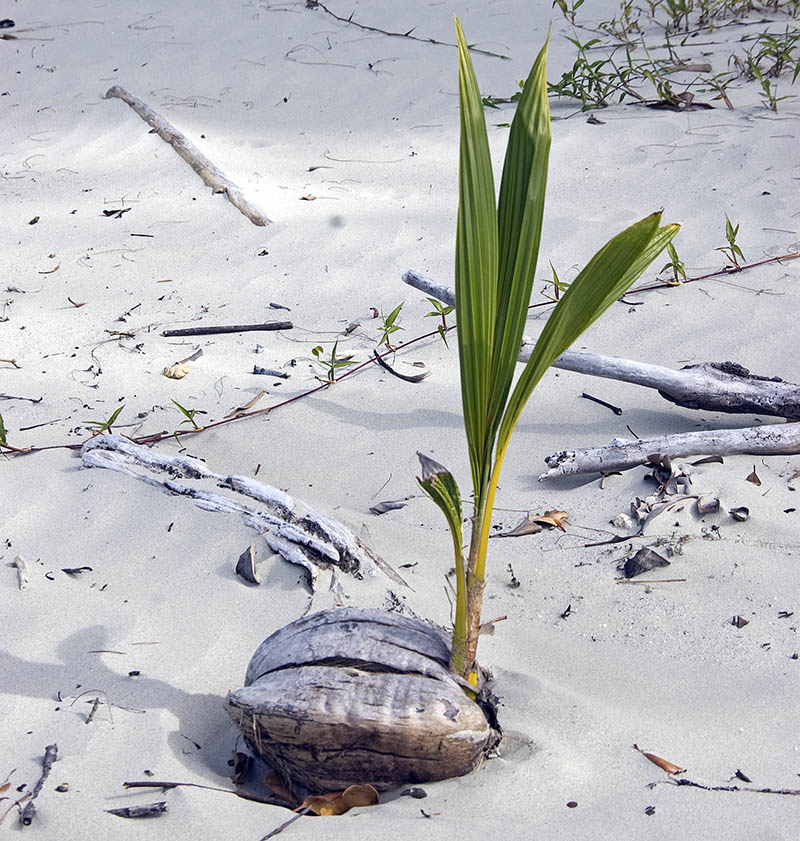
No other plant represents the tropical seashore like the coconut. However, the natural distribution of the coconut palm is an issue of contention, for not only is it a naturally effective disperser, but it has also been spread extensively by humans. It was long noted by European explorers throughout much of the tropical Pacific Ocean, including all the way to the west coast of Coast Rica in Central America; however it is thought to have been introduced into many of these areas. Its original, natural range appears to be centred around the eastern Indian Ocean and south-east Asia. Its distribution along Australia’s coasts is sometimes controversial, with some considering it a ‘weed’. While he observed it in many parts of the tropical Indo-Pacific, explorer Lt. Cook had trouble locating coconuts, (of which he often fed the crew), on his travels along the Australian coastline, and so it has been suggested that Australia was not colonized by coconuts. Today, however, this ‘exotic’ plant is common along the Australian tropical coast, and judging by its effective dispersal techniques and range in the Indo-Pacific, it has probably been there for a long time.
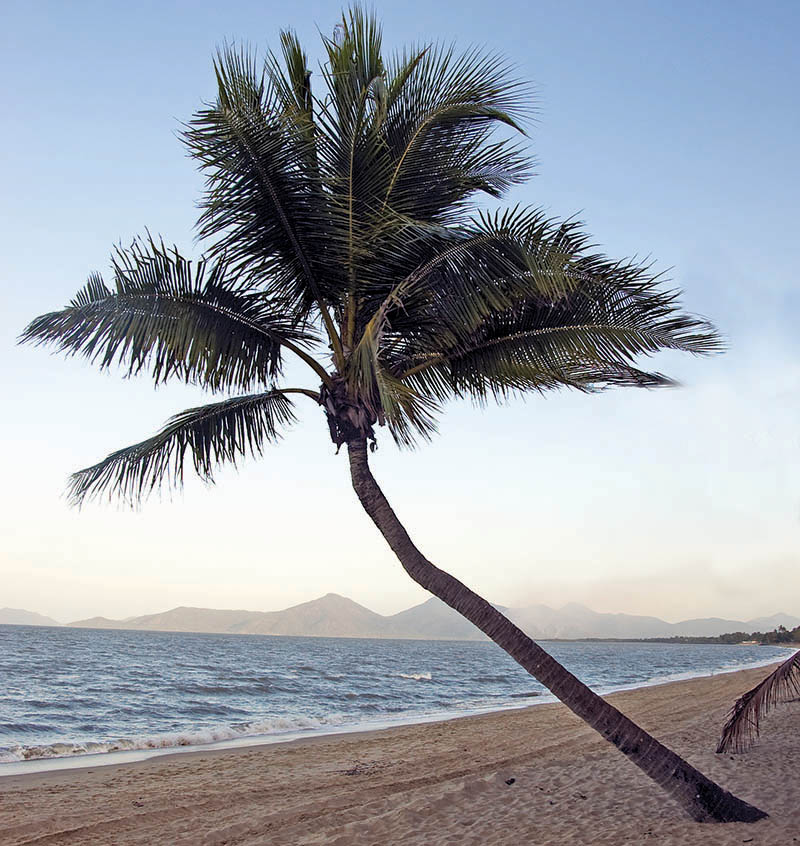 (Holloways Beach, Australia)
(Holloways Beach, Australia)Cocos nucifera ‘Coconut Palm’. Usually grows as large tree, with slim trunks that often lean out towards or over the sea. Top of tree is made up large leaves that arch over their length. Tree produces large fruits which turn from green to brown as they ripen. Fruit is made up of a smoother outer shell which contains another hard layer inside; the hairier husk that most people are famil- iar with. All forms of the fruit, from unripe green to brown to the inner husk are seen washed up on tropical beaches. This fruit contains the ‘coconut milk’.
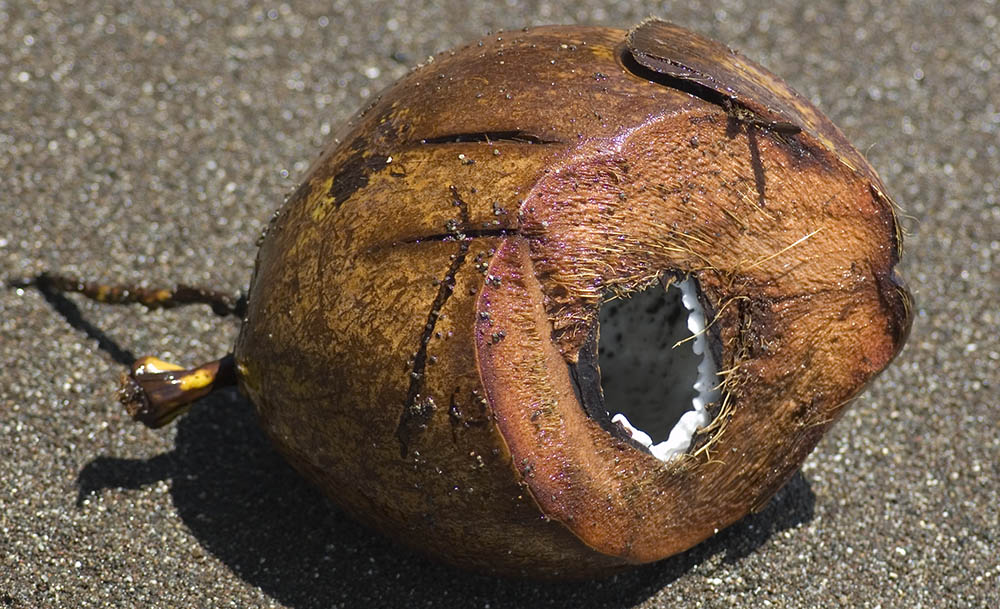 (Papua New Guinea)
(Papua New Guinea)A coconut washed ashore. The hole is propbably been chewed through by a Giant White-tailed Rat.
Nypa spp.
There is only one species in this genus.
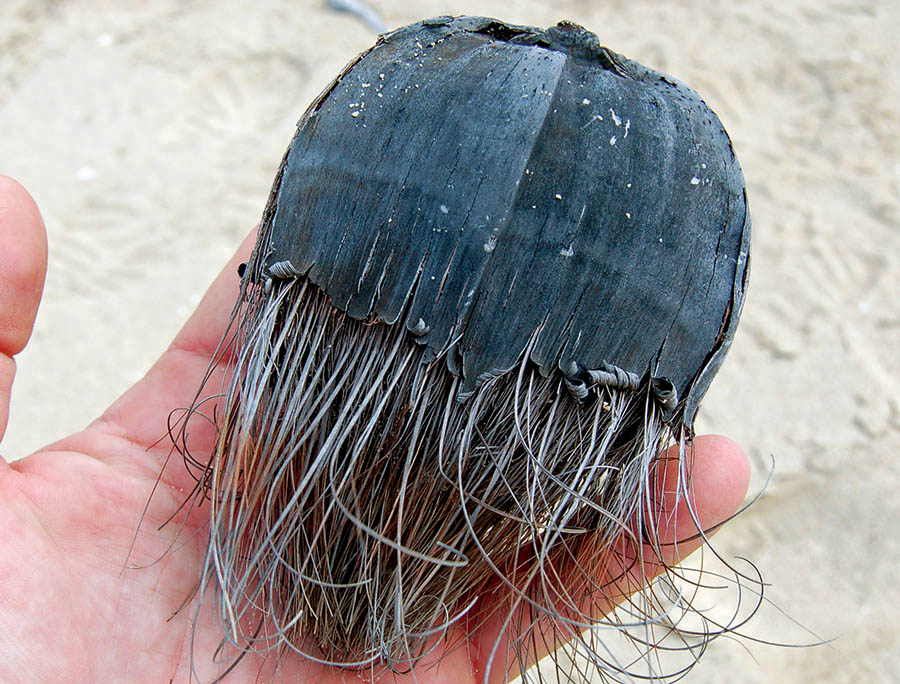 (Queensland)
(Queensland)Nypa fruticans ‘Nipah Palm’, ‘Mangrove Palm’. Large but ‘squat’ palm tree growing out from thick base(s). Tree is not common along Australian tropical seashores, but fruits wash up onto beaches. Fruit is large and woody, looks somewhat like a Pandanus fruit, angular at one end, fibres at one end. According to Smith and Kinnear (1999), the seeds are eaten in dessert in tropical Asia. Found mainly in mangroves in estuaries, often dominating in massive stands, mainly throughout tropical Asia, and into New Guinea, but also extends to a few spots in Queensland and the Northern Territory.
Order Poales
Family Poaceae
This is one of the biggest of all plant families, with up to 10,000 species found all over the world. Naturally, there are several grasses found in the sand along the tropical Australian seashore. Most species are small and herb like. They produce tiny flowers contained within a pair of pointed bracts, called a spikelet. There are usually many of these spikelets on each plant.
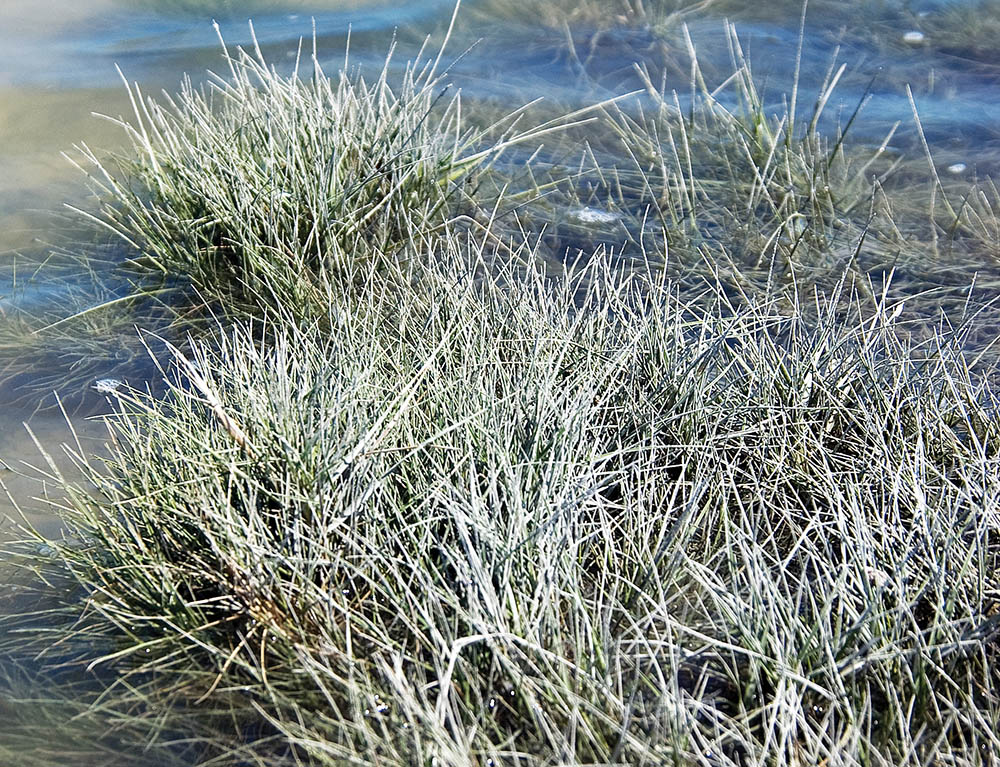
Sporobolus virginicus ‘Saltwater Couch’. At first glance looks like seagrass, (which is also a true flowering plant, but is not closely related to grasses). Grey green in colour. Looks like it has been trampled on. Leaves are stiff and a bit spiky to walk on. Cribb and Cribb (1985) report that the small black seeds are edible. Grows on edge of salt water, and gets wet at higher tides. Tends to be more obvious in open areas with higher salinity due to evaporation, such as salt marshes on landward side of mangroves, and muflats. Very widespread, being found along tropical and temperate coasts around world (scientific name virginicus reflects that it was named in North America).
Spinifex spp.
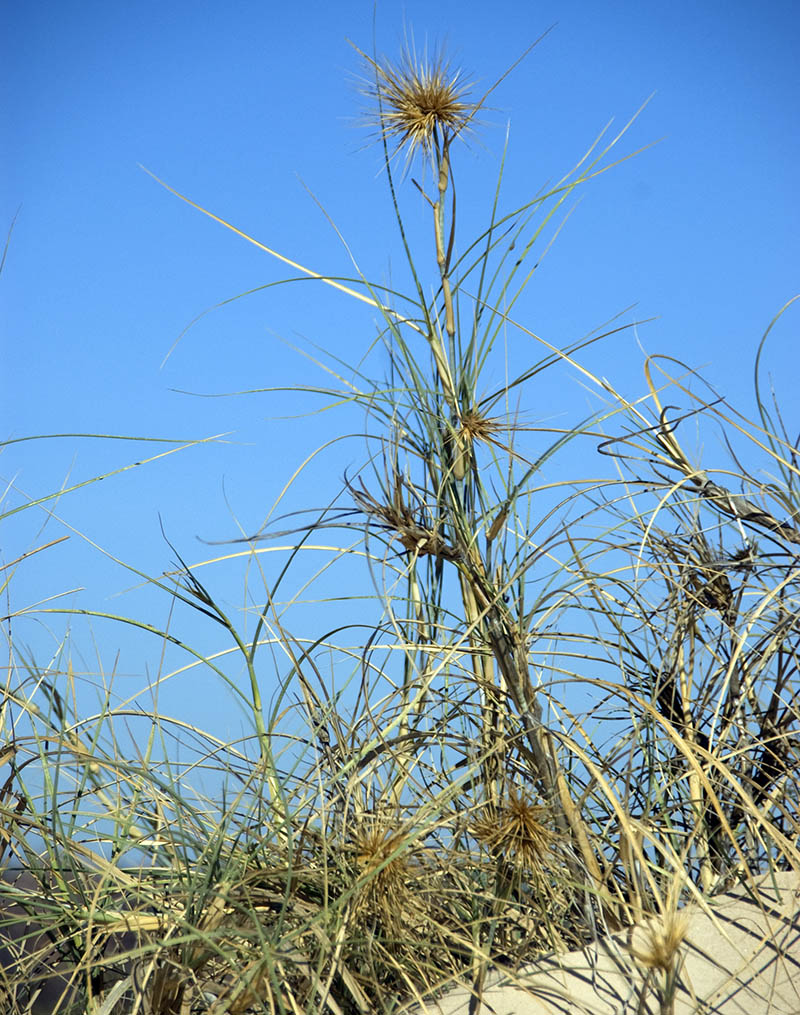
The 4 species of ‘true spinifex’ found in the Indo-Pacific region are not closely related to the ‘spinifex’ Triodia of more arid parts of Australia. They are large grasses, with bunches of leaves growing up from runners through the sand. The many tiny female flowers combine into a large spiky ball. When mature, these come off and may roll along the sandy beach like a cartoon tumbleweed.
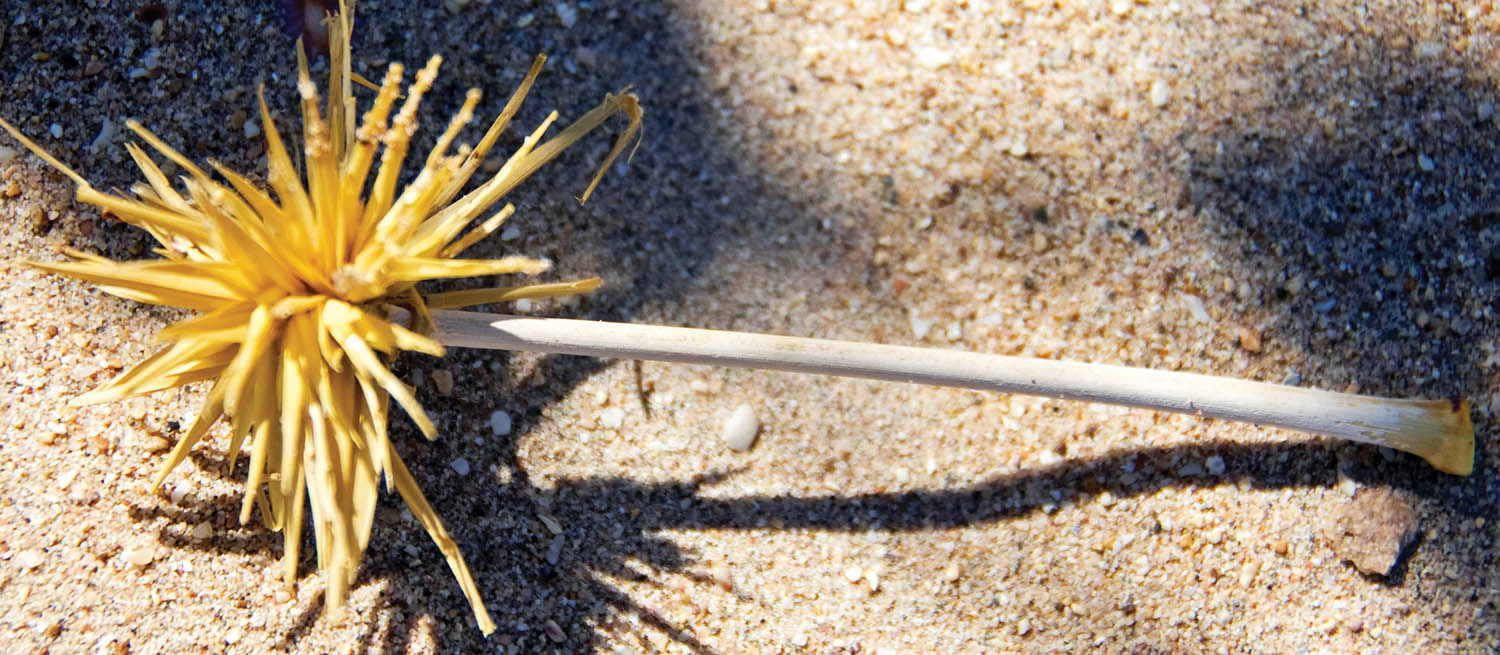
They are an important early coloniser of the coast, stabilizing dune systems. They are found in sand along coasts, with 4 different species occurring in parts of the Indo-Pacific. The two species found along the tropical Australian coast are Spinifex hirsutus and Spinifex longifolius.
Order Fabales
Superfamily/Family Fabaceae: 'Legumes'
The ‘legumes’ are a huge group of plants that are found all over the world in almost every habitat. In an international context, they are usually placed in the one massive and very diverse family, but the three main groups are distinctive enough to be divided into 3 separate families, as outlined over the next few pages.
Legumes often have compound leaves. These are leaves that have been split into smaller leafllets. They commonly appear as either many small leaflets (giving the plant a feathery appearance, as in Caesalpinia or juvenile Acacia) or in groups of three; the trifoliate leaves as pictured (as with Canavalia and Vigna). Species in this group often have showy flowers and develop hard seed pods. These woody pods and their seeds are often wood dispersed and thus they are frequently found washed up on Australian tropi- cal shores.
The group includes many ornamentals (from golden wattles to golden shower trees), as well as species that provide us with food products, (from soy bean to bean sprouts). There are also a number of species that are common and important along the tropical seashores. In fact, many legumes have adapted well to living on the coast where other plants cannot live, because they can fix nitrogen in the nutrient poor sandy seashore soils. On some small distant islands, creeping legumes may be among some of the few plants that survive.
Family Mimosaceae / Subfamily Mimosoideae
This group contains about 3000 species. Because of the genus Acacia, they are one of the most dominant families in the tropical woodlands of Africa, the Americas and Australia. They tend to be shrubs or trees, occasionally vines, and many species have bipinnate leaves, made up of many small leaflets. The flowers are commonly in ‘powderpuff’ heads. The following fruits tend to be a woody pod that splits along both sides. They are most diverse in the drier or seasonally dry parts of the warmer regions of the world, including along the tropical seashore.
Entada spp. ‘Sea Beans’, ‘Matchbox Beans’
There are 30 species in this genus, and they are widespread throughout the tropics of the world. The woody vines can become quite thick, and with age Entada phaseoloides develops a very distinctive series of sharp-edged twists. The enormous pods go from green to brown, then drop out, leaving an empty border. The pods and the large dark brown seeds are dispersed by the ocean, and therefore frequently wash up on beaches, especially in the wetter tropical areas. They then germinate all over the tropical Indo-Pacific, from eastern Africa, through tropical Asia, and across tropical Australia. The attractiveness of the seed pod and their waterproof quality made them an ideal container for matches in the colonial days of North Queensland. (The tree Intsia bijuga, ‘Kwila’ produces a similar but smaller version of these seeds.)
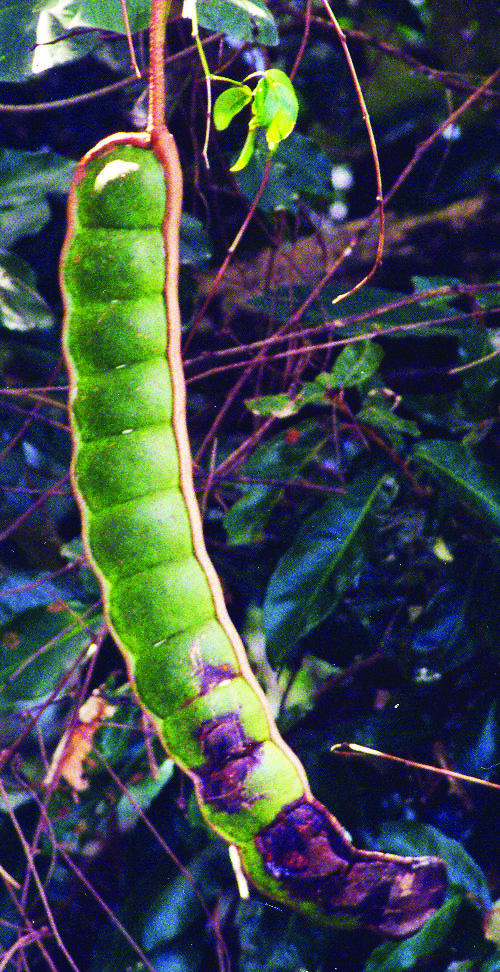
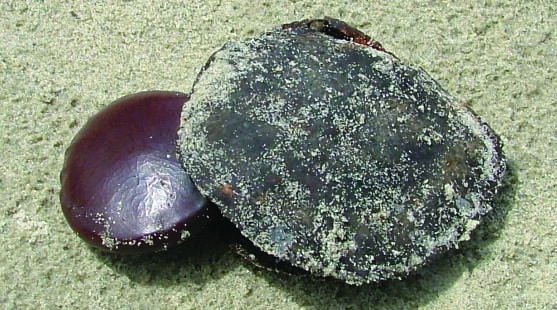
Family Fabaceae/Subfamily Papilionoideae ‘Beans’
This is a massive family, with over 10,000 species in some 400 genera. They are found all over the world, but best developed in the tropics, with a number of species being common and important tropical seashore residents. The easiest way to recognize species in this group is by their ‘pea’-like flower, where one petal is much larger than the others.
Erythrina spp. ‘Coral Trees’
This genus contains some 100 species throughout the tropics of the world. There are several species found along the coast; Erythrina variegata ‘Beach Coral Tree’ and Erythrina vespertilio ‘Bat’s Wing Coral Tree’. They both grow as trees, and have corky bark, with the former having prickles. Both have compound leaves made up of 3 leaflets; in the latter species the central leaflet is broad, while in the former, it is winged and suggests the shape of a bat. They usually drop their leaves in the dry season and this is when they flower. The flowers are produced on heads in whorls, and each flower has one petal much larger than the other petals. These are followed by dark pods with a waist.
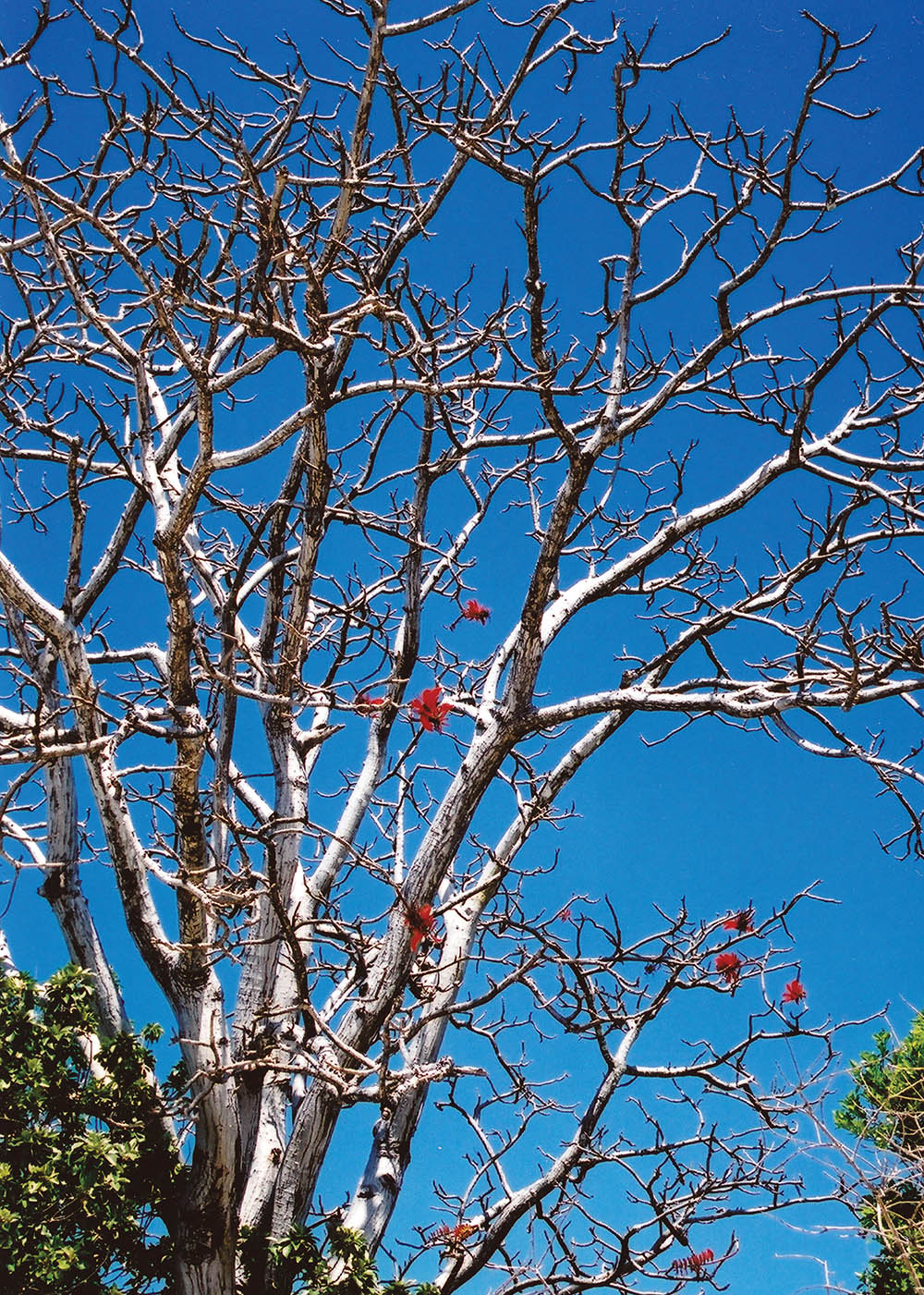 (Frankland Islands, Australia)
(Frankland Islands, Australia)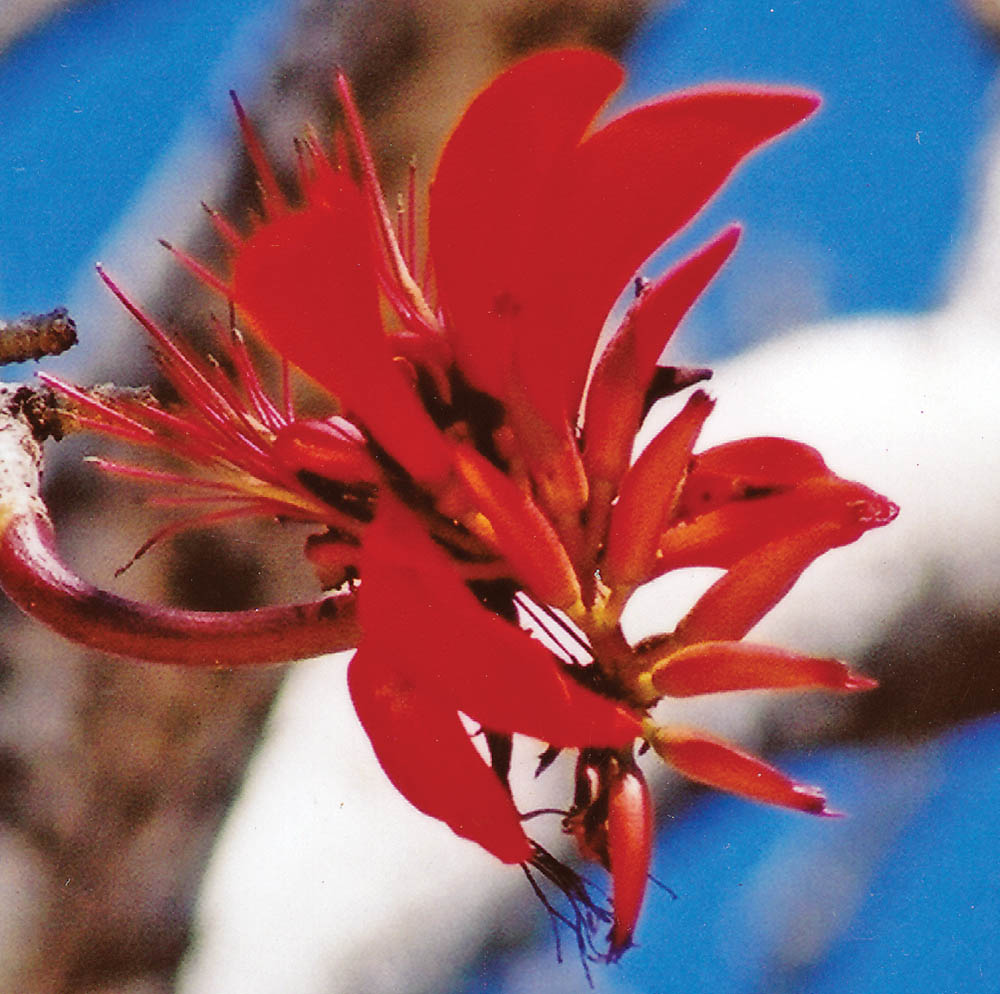 (Frankland Islands, Australia)
(Frankland Islands, Australia)Sophora spp.
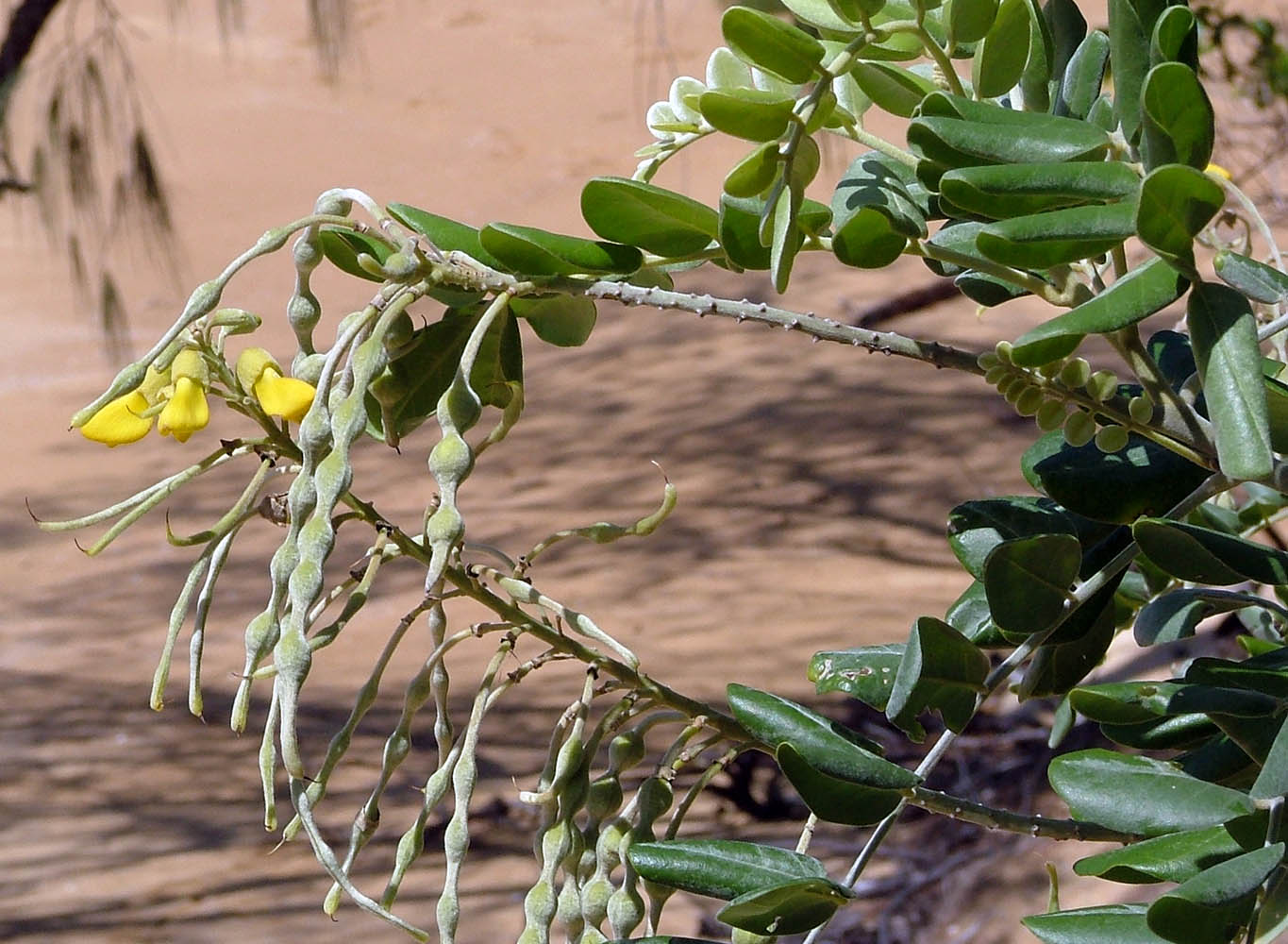
Sophora tormentosa ‘Silver Bean’. Shrub. Distinctive leaves; they are compound with up to a dozen or more small, round almost silvery leaflets. Yellow pea-like flowers. Silver, velvet looking pods, with very narrow waists. Common on beaches around the tropics of the world.
Mucuna spp.
This genus contains some 100 species throughout the tropics and subtropics of the world.
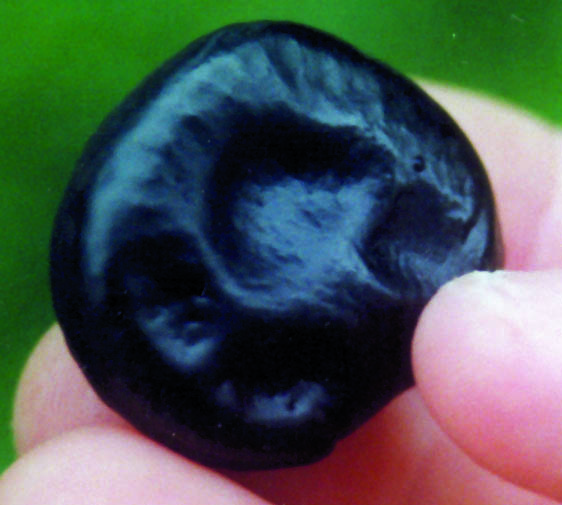
Mucuna gigantea ‘Burny Bean’ ‘Velvet Bean’. Climber. Compound leaves of 3 leaflets. Unusual greenish-white flowers that hang down. Large hanging pods, covered in irritating hairs Seeds are ‘rounded square’ in shape, shiny, black, and dented. Famous amongst children in north-east because if you rub bean quickly on clothing, gets hot enough to hurt your victim! Seed is sometimes found washed up along beaches. Found in forest and on seashore across tropical Australia, New Guinea, into Asia. The tree Intsia bijuga, ‘Kwila’ has similar seed, but it tends to be heart-shaped, smoother, and duller.
Canavalia spp.
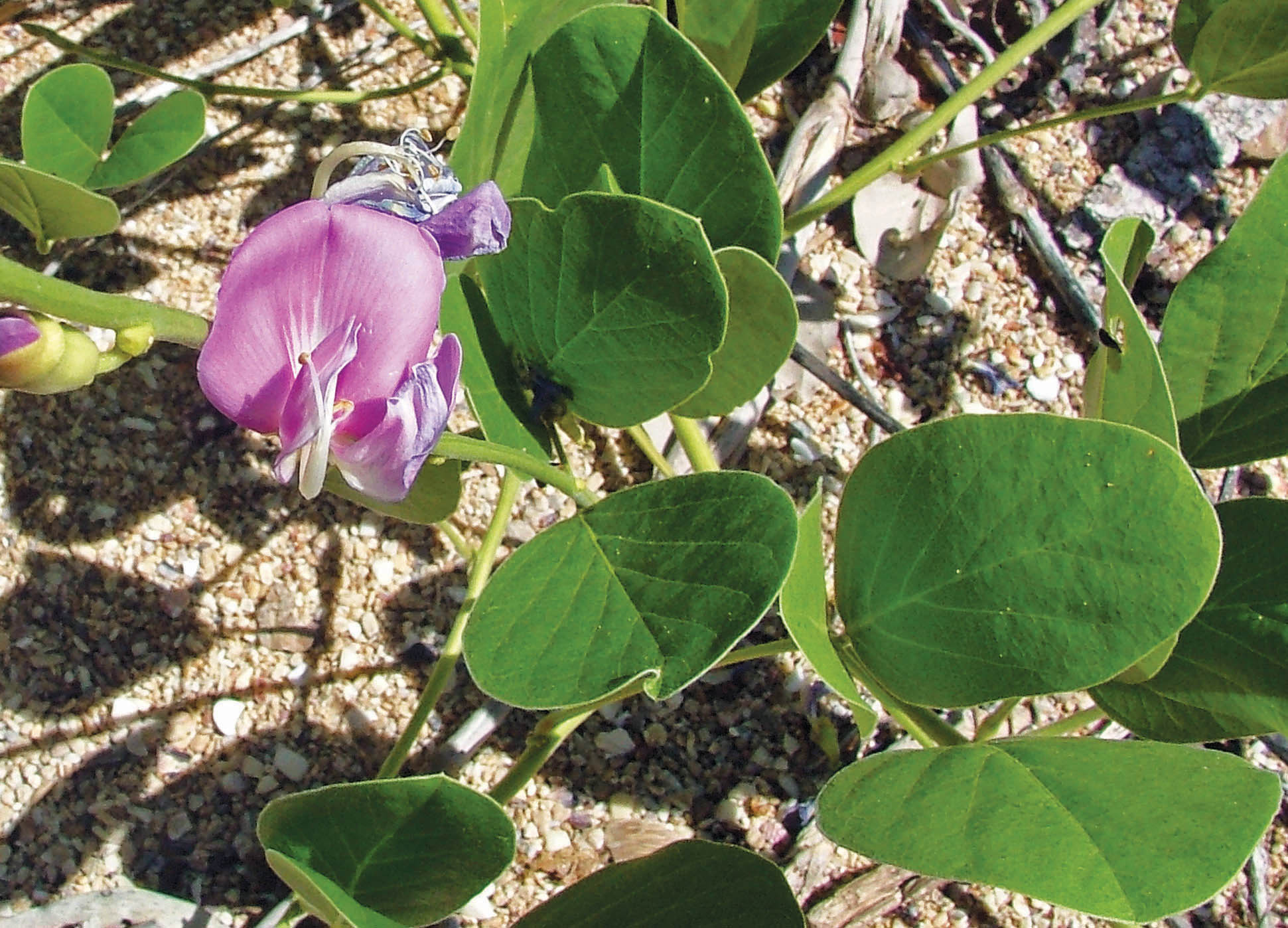 (KImberley coast, Australia)
(KImberley coast, Australia)Canavalia rosea, ‘Sea Bean’. Prostrate crawler. Alternate compound leaves made up of three (trifoliate) round leaflets. Bright pink pea flowers. Green pea-like seed pod. Along with the 'Goats Foot Ipomea', this is one of the most common creepers along the sandy tropical shores of Australia. Found throughout the tropical Indo-Pacific. There is another very similar plant called Vigna marina distinguished by its yellow flowers, rather than pink.
Family/Subfamily Caesalpiniaceae/Caesalpinioideae
This large family of legumes has over 2000 species in 150 genera (Hyland et al 2002). They are found all over the tropics of the world, with many extending to the subtropics and a few in temperate areas. The plants themselves can grow in a variety of forms, from vines to trees. The leaves are compound; that is, they are usually divided into small round leaflets, being pinnate or bipin- nate. The flowers are irregular and can be quite elaborate, usually with well developed lateral or side petals, and thus appearing almost orchid-like. Being a legume, the resulting fruits are predominantly bean-like pods with seeds encased inside. Many of the plants in this family are used as ornamentals; for example, the ‘Poinciana’ Delonix regia and others are common street trees in tropical coastal towns.
Caesalpinia spp.
This is a group of some 100 species found throughout the tropics of the world. A dozen species extend across northern Australia. The genus is named after an Italian botanist of the 16th century (Cooper and Cooper 2004). The most commonly seen species on the Australian tropical shore tend to be climbers with small sharp spines on the stems for climbing, and some also have spines on the seed pods. They have various local names reflecting their spiny nature; ‘Prickly Poinciana’, ‘Prickle Vine’, and ‘Mother-in-Law Vine’. The leaves are compound with small leaflets, giving a misleading soft feathery appearance, concealing their somewhat prickly nature. They produce round flat pods that open to reveal the round or angular flattened seeds inside.
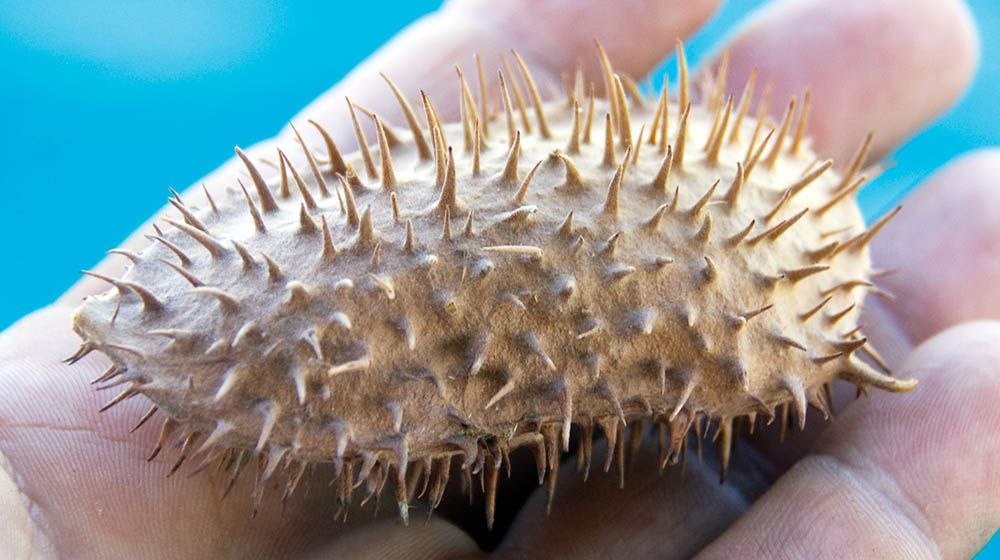
Order Malpighiales
Family Rhizophoraceae
While different mangrove genera have evolved once or twice out of many different families, the family Rhizophoraceae is actually dominated by them. Most of the members of the family tend to have round, smooth, shiny, leathery leaves with a short point, and are bunched together at the end of the branches. There is often a long terminal stipule. Most species of Rhizophora, Ceriops, and Bruguiera produce the distinctive long cigar-like seedlings propagules that can be found on seashores.
Rhizophora spp.
Rhizophora are well known and recognizable mangroves. This is largely due to their often elaborate prop root systems. In other respects it is typical of the rest of the family in having shiny, roundish leaves bunched at the end of the stems, small flowers, and long seedlings that often begin to grow on the parent tree.

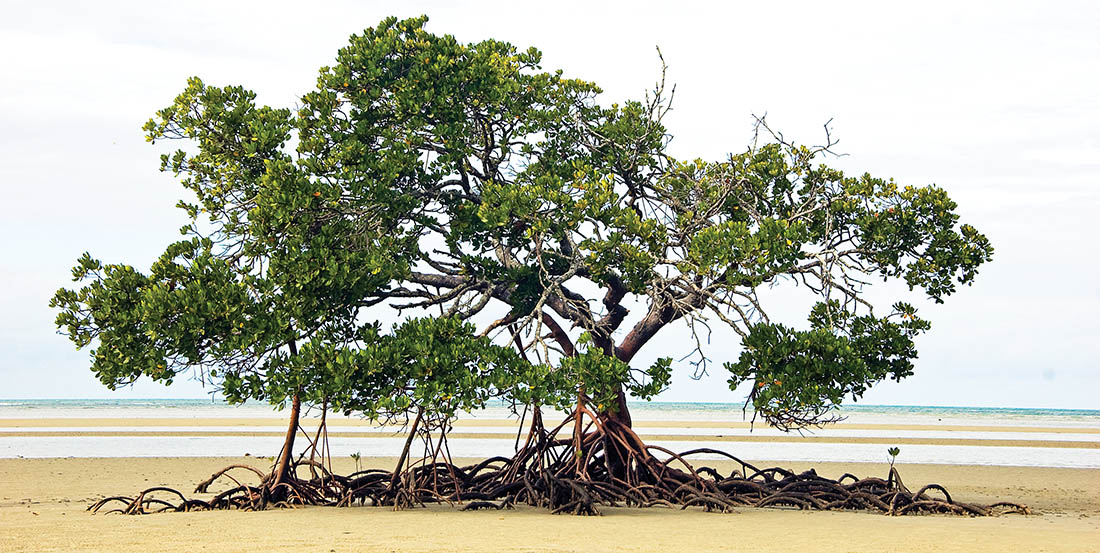 (Cowrie Beach, Bloomfield, Australia)
(Cowrie Beach, Bloomfield, Australia)Rhizophora stylosa, ‘Red Mangrove’. Usually grows as a small tree. Common name comes from the reddish colour of the trunk and roots, especially when wet. Roots are long and spider like. There are often long stiff aerial roots growing down from the branches to the ground. They are sometimes found growing singly or in groups in clean sand along beaches.
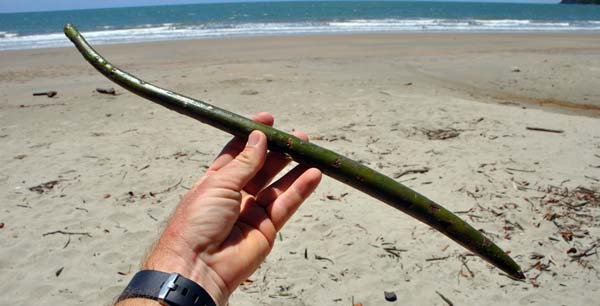 (Etty Bay Queensland, Australia)
(Etty Bay Queensland, Australia)Rhizophora mucronata, 'Loop root', 'Red Mangrove'. The longest mangrove seed.
Family Clusiaceae
There are some 1,200 species in this family, and they are found throughout the tropics of the world. The trees in this family often have very smooth, glossy leaves with fine venation that is almost perpendicular to the main central vein. They often have yellow latex when the leaves are torn.
Calophyllum spp.
There are over 180 species in this genus and they are found throughout the tropics of the world. The scientific name translates to ‘Beauty Leaf”.
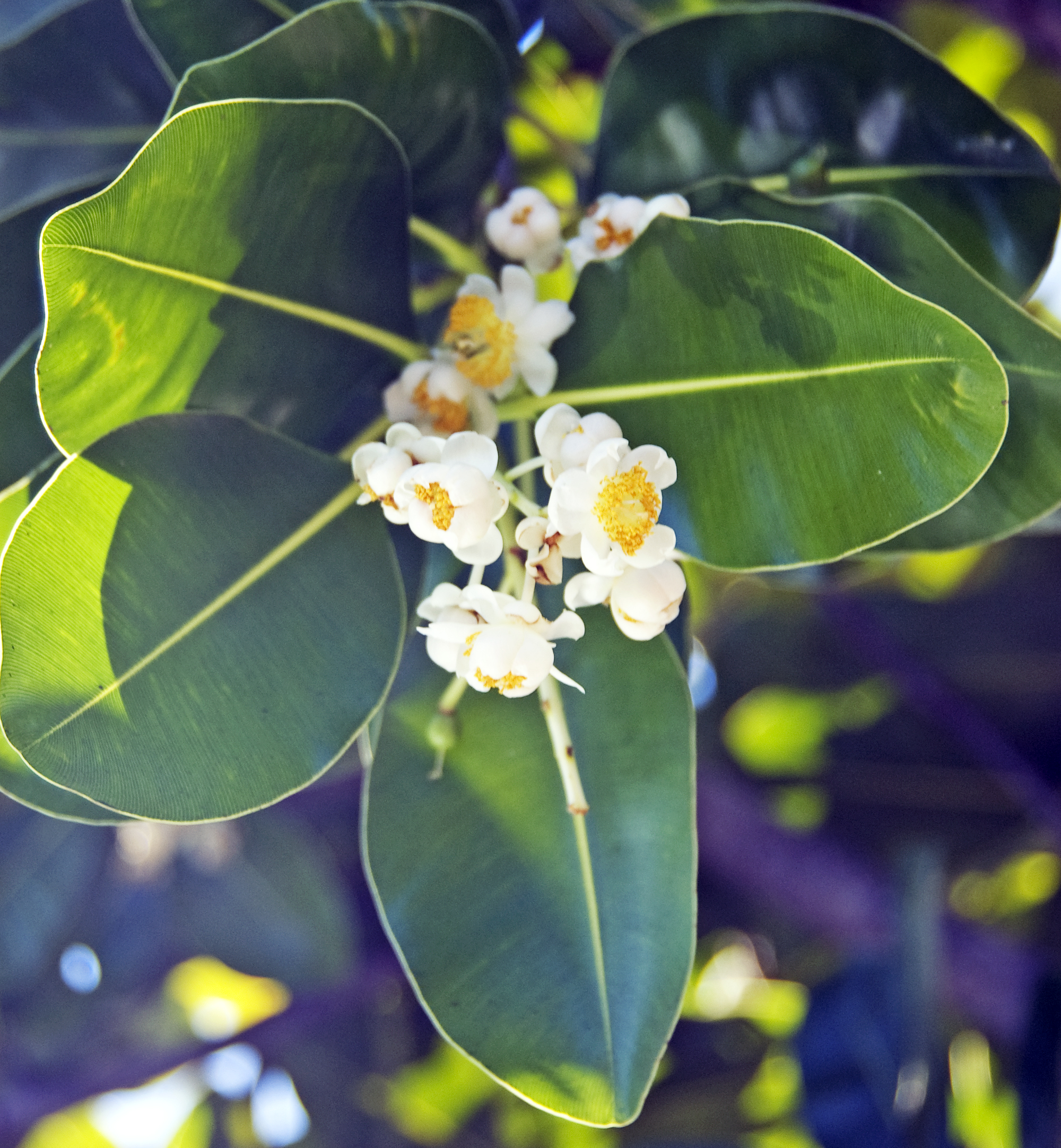
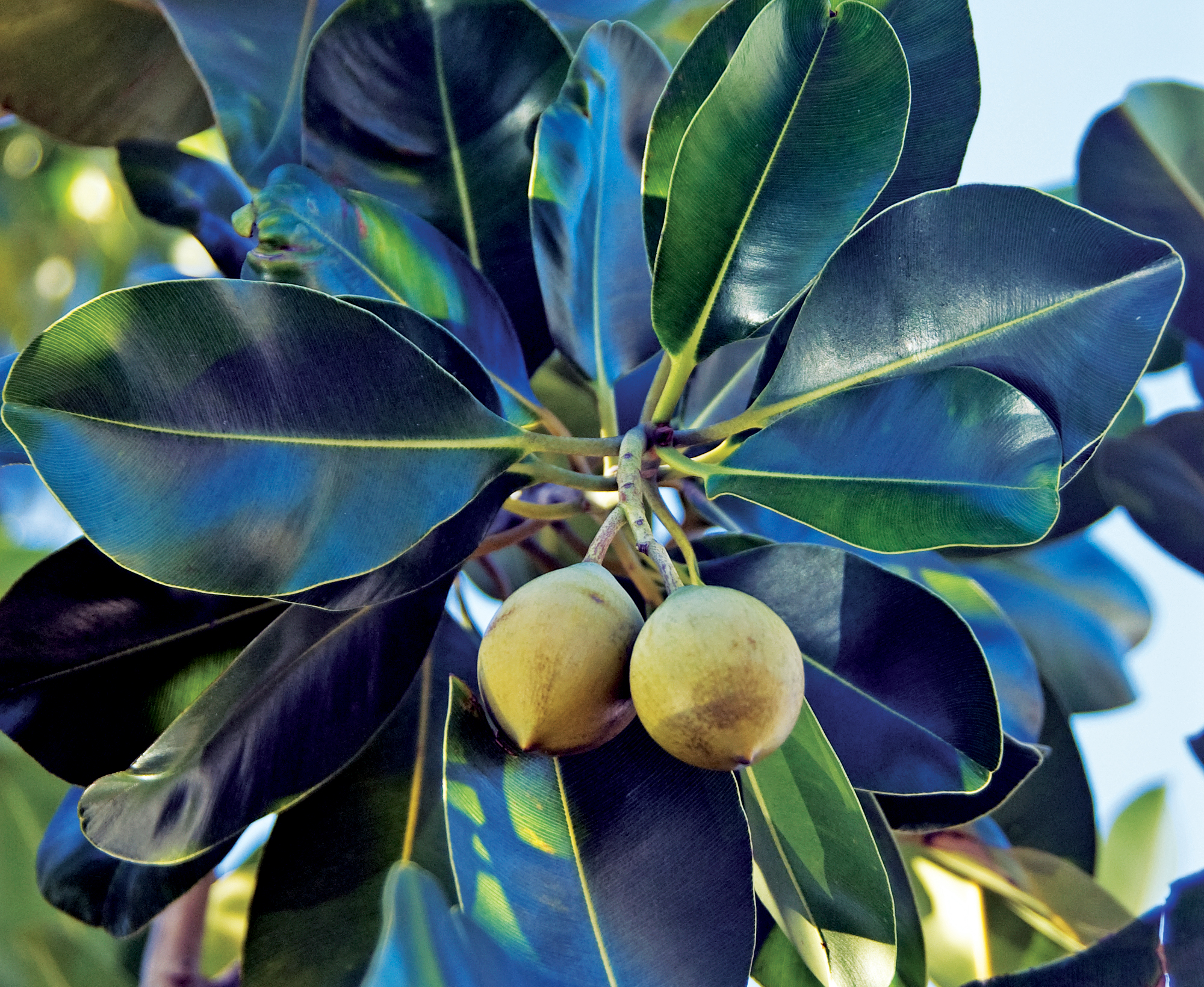
Calophyllum inophyllum, ‘Beauty Leaf’. Can grow quite large, the scaly trunk growing from coastal forest, then leaning over the sandy beach. Leaves very smooth and glossy with fine, close venation. Flowers are white and yellow. Followed by round green fruits that end up on beach. One of most dominant trees in wetter forest along tropical coast of Australia, and up into New Guinea, and into tropical Asia.
Order Fagales
Family Casuarinaceae
The family Casuarinaceae contains the ‘she-oaks’, a group confined mainly to sandy soils across Australia, from rivers to woodlands to deserts. However, there are a couple of much more widespread species that are found on tropical beaches.
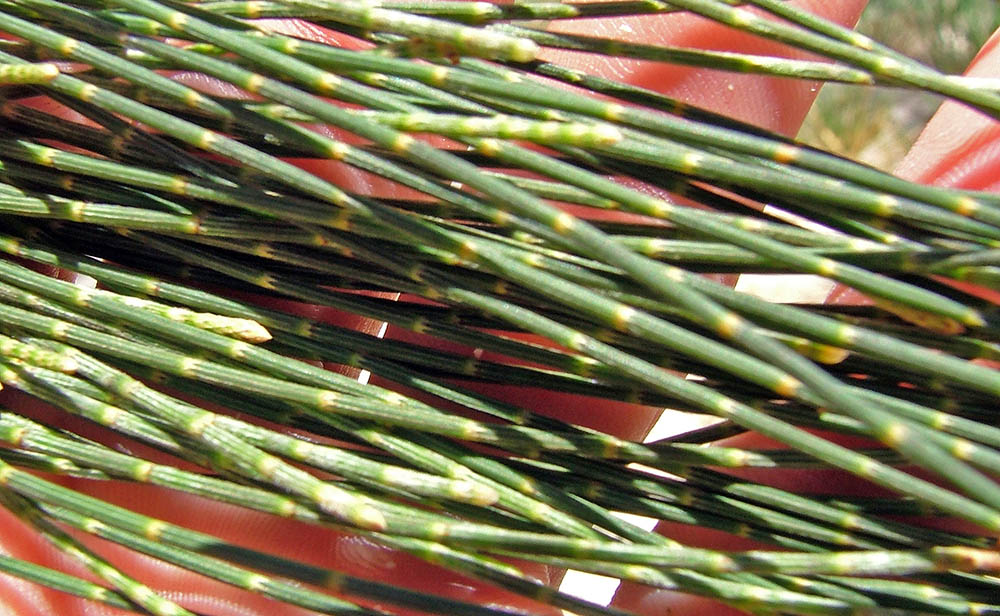
Casuarinas usually grow as trees or large shrubs. They are wispy trees that often provide what little shade there is along some of the hotter, more exposed tropical seashores. When the wind blows through their foliage they produce a wonderful sigh that is perfect to lay down under on a tropical day. This foliage is made up of many drooping, almost pine-like ‘leaves’. These in fact are not the leaves, but branchlets. The true leaves are virtually unnoticeable, being tiny and scale-like, and found at regular intervals along the stems.
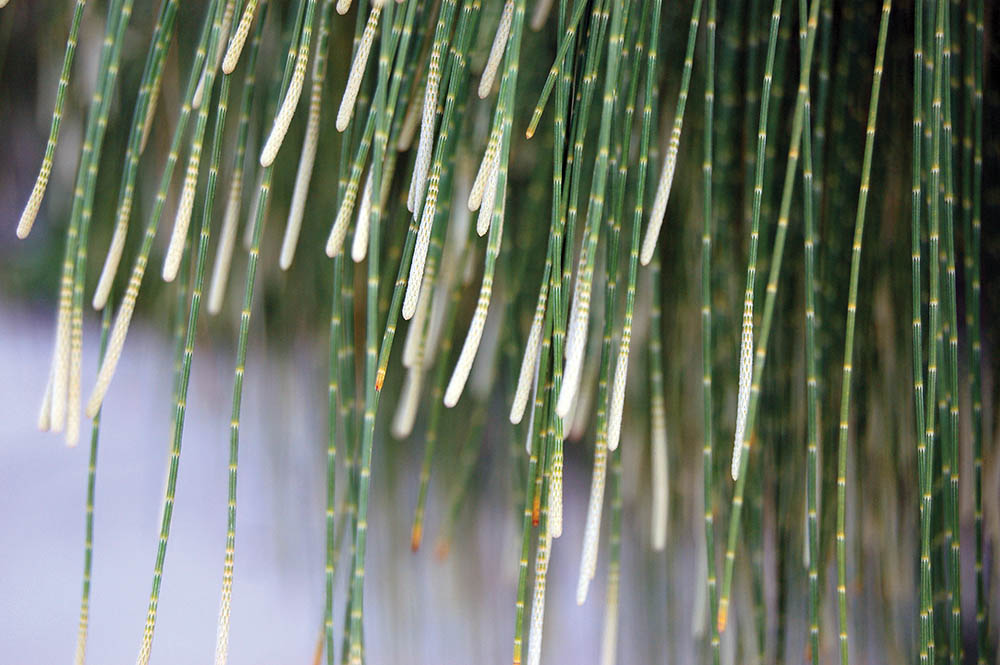
The flowers are also tiny. The male flowers are usually produced at the end of the main branchlets, while the slightly larger reddish female flowers are produced along the side of the branchlets.
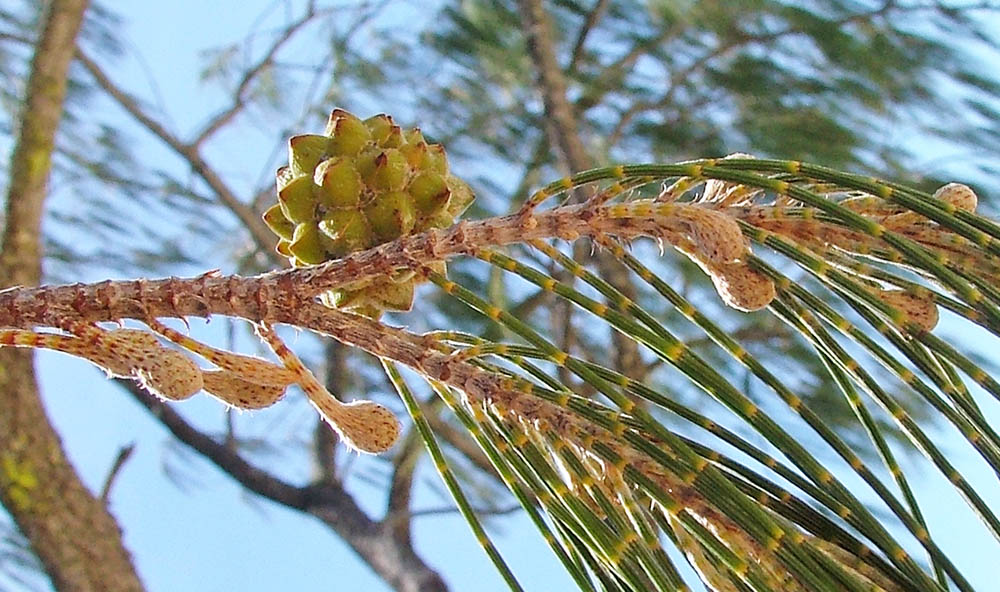
They are followed by small, spiky, hard fruits.
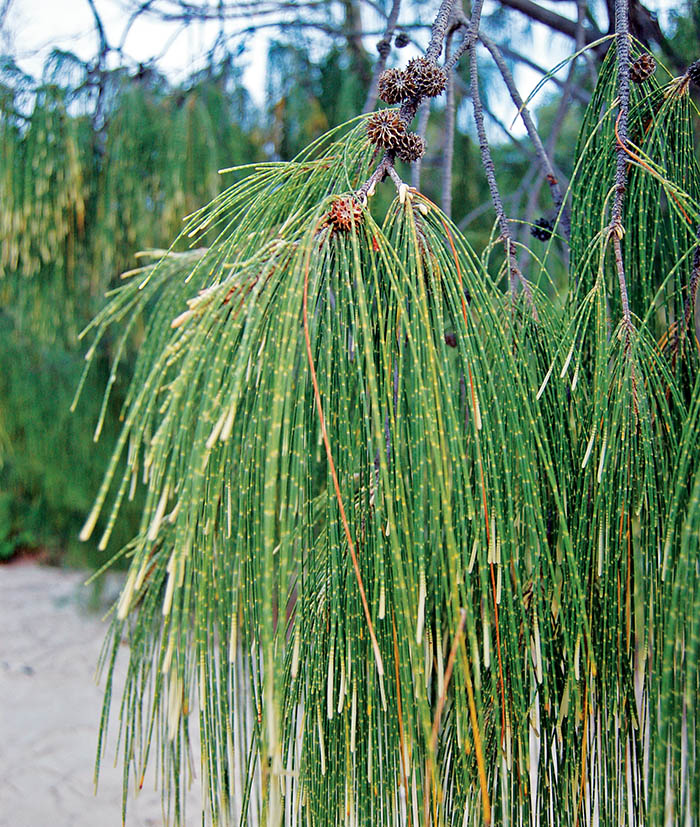
Casuarina equisetifolia, ‘Beach Casuarina’, ‘Coastal She-oak’. Grows to a large tree. Thin and wispy grey-green foliage. Tiny whitish male flowers are produced at end of branchlets. Slightly larger reddish female flowers are on shorter side branchlets shaped like a club. Followed by small, spiky, hard fruits. Often one of the first trees to colonize the sandy beach. This is the most widespread species of Casuarina, being found along tropical coastlines around Australia, through South-east Asia, and out into the Pacific.
Order Myrtales
Family Lythraceae
This family contains over 30 genera and 600 species. The species are mainly herbs and shrubs. They are found all over the world. The petals are often held ‘scrunched’ up in the bud, and thus when they release they appear ‘crumpled’.
Pemphis spp.
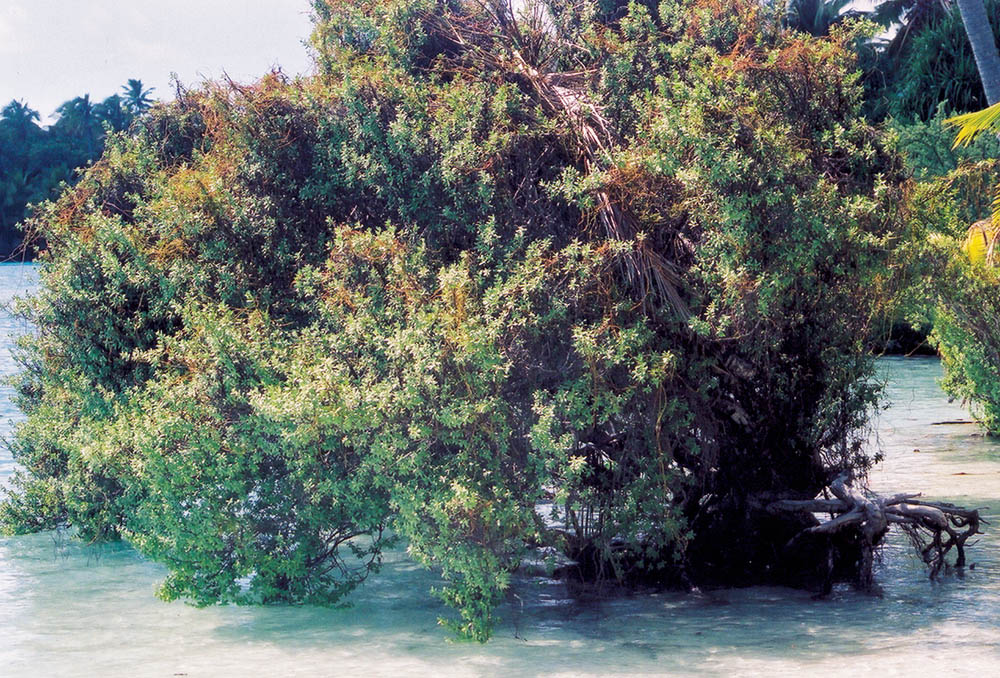 (Polynesia)
(Polynesia)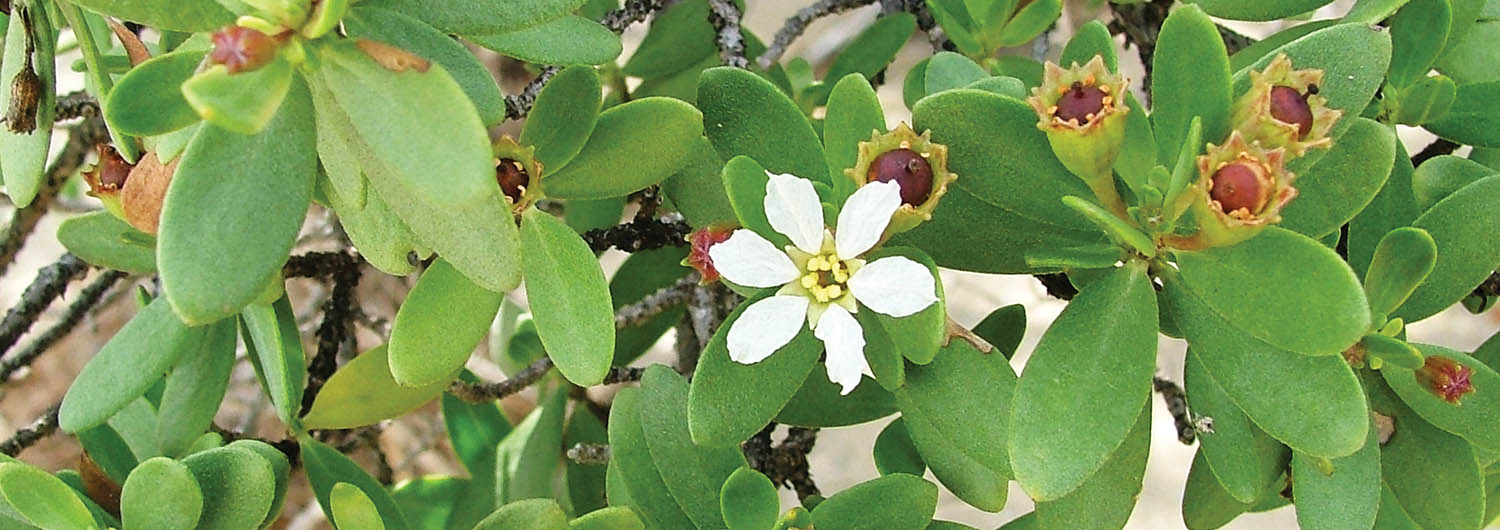 (Cape York coast, Australia)
(Cape York coast, Australia)Pemphis acidula. Stunted growth, flaky bark and small leaves. Looks rather like a tea tree – even the flowers are leptospermum-like. However, small leaves are not at all fragrant when crushed. Tree is usually fairly short, often bush like. Bark is fissured and often flaky or stringy. Leaves are small and rounded with a small rounded tip, almost succulent in character, and sometimes slightly hairy, very short petiole and are thus held close to the branch. Flowers are small and white, with the quite separate petals having pointed tips, and there are small yellow stamens in the middle. Fruit is small and woody. Often referred to as a ‘mangrove’, but probably more often noticed when growing along sandy and rocky beaches (sometimes well into the sea water) rather than in mangrove communities. Found throughout much of the tropical Indo-Pacific, from eastern Africa to Polynesia.
Sonneratia spp. 'White Mangroves'
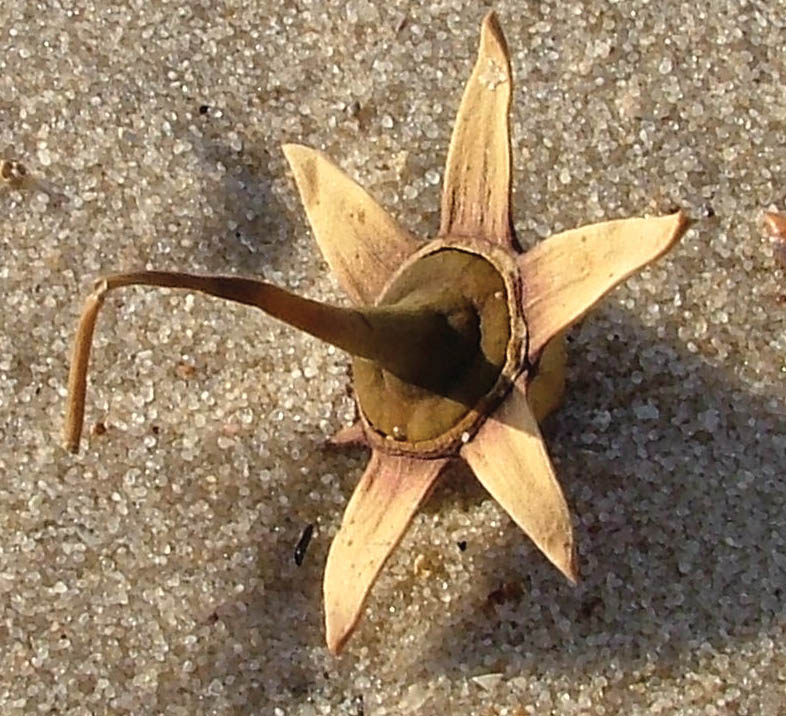
Sonneratia alba, ‘Apple Mangrove’, ‘White Mangrove’. Tree, with rounded 'apple' green fruit, which is dispersed by the sea, and reported to be edible in tropical Asia. Normally grows in adjacent mangrove communities, with the both the star-shaped flower calyx (the base of the flower, pictured) and the older browner fruit being found washed up on tropical Indo-Pacific beaches.
Family Myrtaceae
While the large family Myrtaceae is arguably the most important in the Australasian region, there are only a handful of species along tropical seashores.
Osbornia spp.
This genus contains only the 1 species.
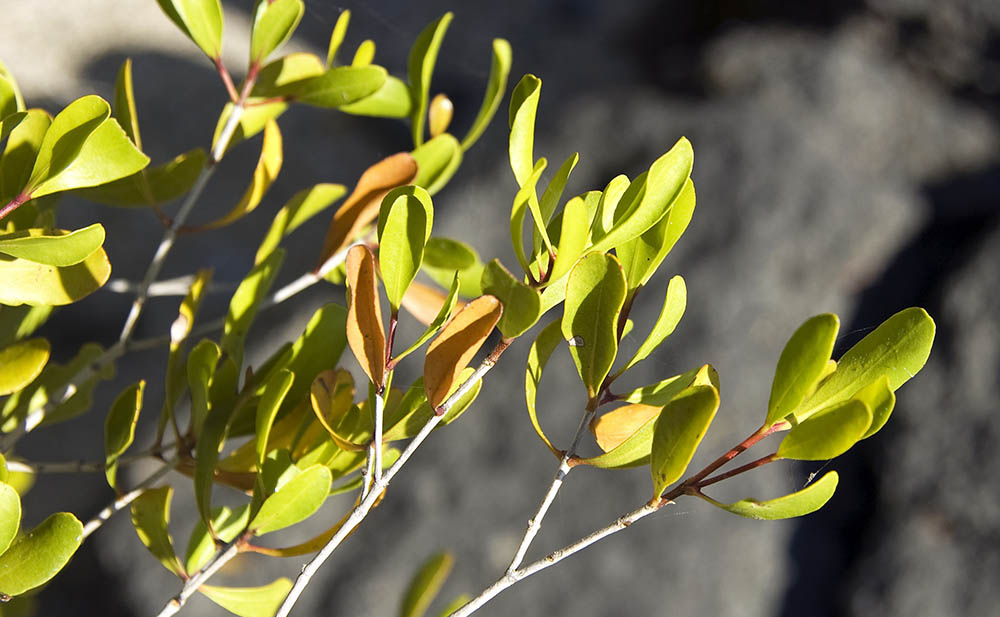 (Kimberley)
(Kimberley)Osbornia octodonta, ‘Myrtle Mangrove'. Usually grows as a shrub to small tree. Small rounded, light green leaves, in opposite pairs, with distinctive red stems, unlike any other mangrove. An even more distinctive feature is that when the leaves are broken up, they have a ‘tea-tree’ small. Small white flowers. Small, cup-shaped fruits. Even though this is called a 'mangrove', it just as often found on beaches outside, or on the edge of, the mangrove communities. It is usually found in small numbers, mixed in with other mangroves, often on sandy beaches or spits. Distribution is northern Australia and through south-east Asia.
Family Combretaceae
There are over 530 species in this family. They are found throughout the tropics of the world, rarely in cooler areas, and are particularly well represented in tropical Africa.
Terminalia spp.
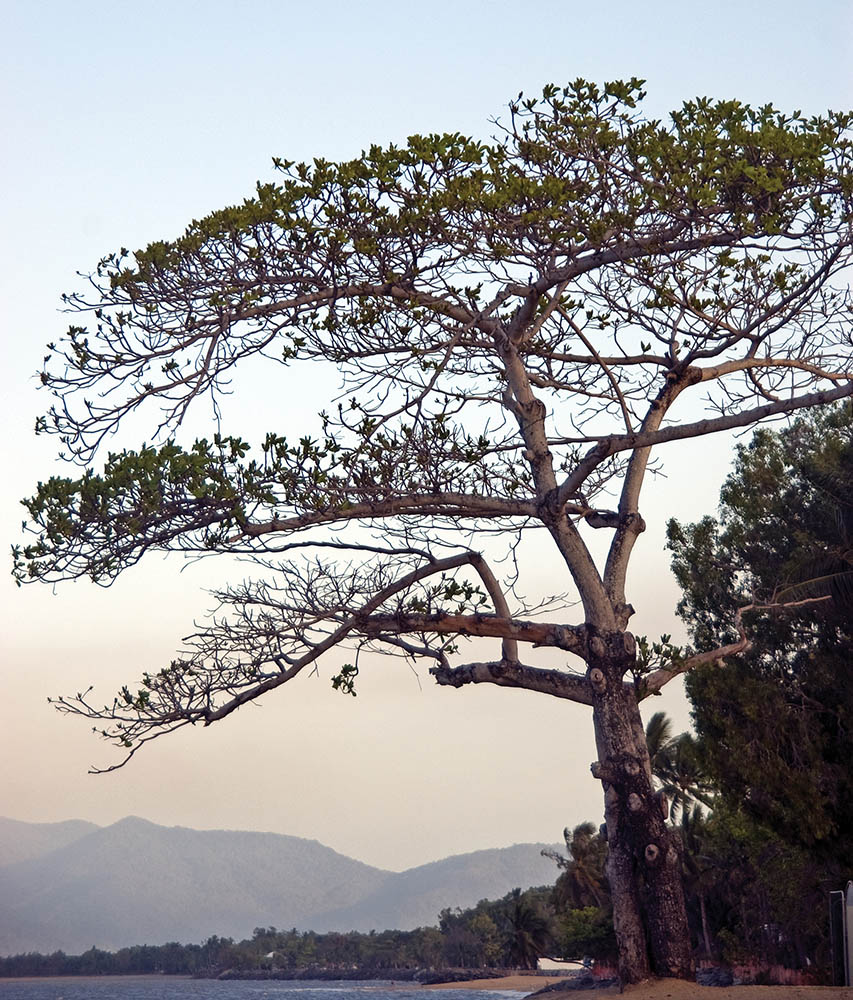
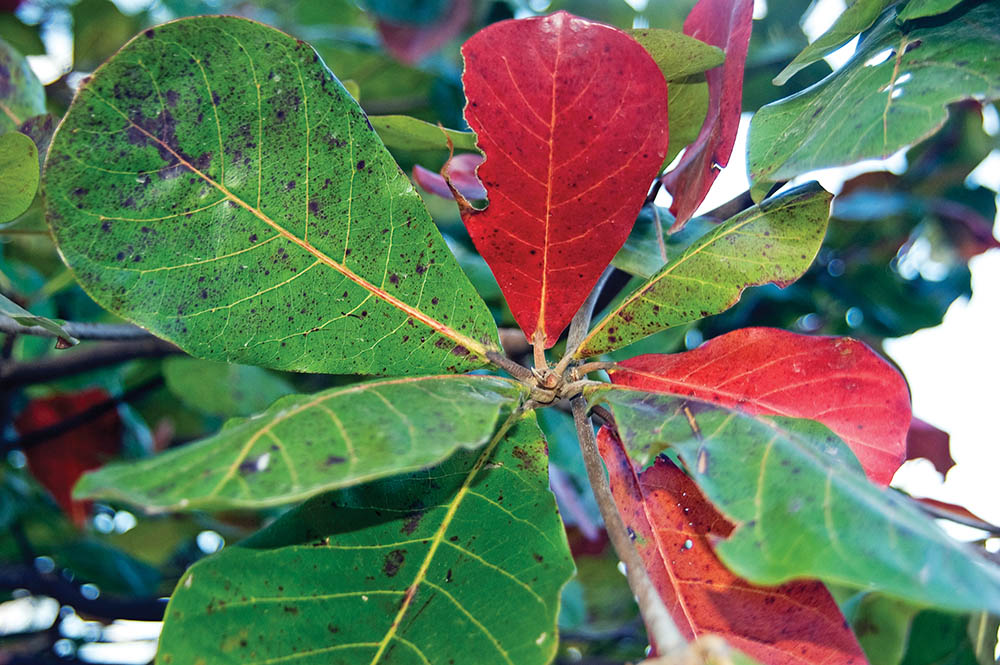
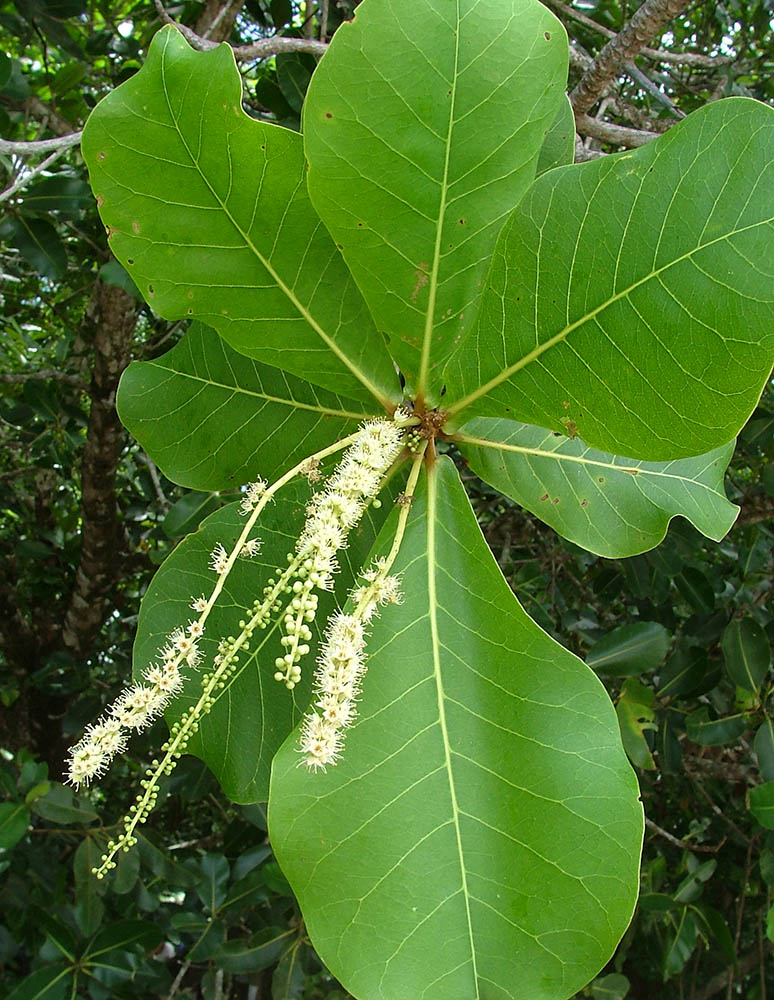
This is a genus of about 200 species found throughout the tropics of the world. As suggested by the common name, the leaves in many species tend to be bunched at the terminal end of the branches. The leaves are mostly large, rounded and bigger towards the end. The flowers are usually small, without petals, cream in colour, and arranged along long spikes. The fruits are usually oval in shape, and are often hard-ish with a thin leathery flesh. They are usually coloured with variations of red, purple or blue and have hard to get at, but sometimes tasty, kernels inside. While there are several species in the rainforest and woodlands of Australia, they are well represented on the tropical shore, with 3 commonly seen species. They are almost symbolic of the wetter coasts of the Indo-Pacific, and there are frequently extra specimens planted along tropical towns and beaches.
 (Cairns, Australia)
(Cairns, Australia)Terminalia catappa, ‘Beach Almond’. Wide tree, with layered ‘pagoda’ branches. Large leaves, widening at end, and growing from end of branch. Deciduous: leaves go red before falling off, and there are usually many bright red leaves present. Cream flowers on a spike. Large, canoe-shaped fruits ripen from green to blue-purple. Often seen littering ground along tropical coasts. Occurs naturally along tropical coasts of Australia and Asia. Locally, the wide canopy and large leaves provide much better shade than the wispy Casuarinas and thin leaves of Paperbarks that share the same habitat; so it has been planted extensively along coasts all around the world.
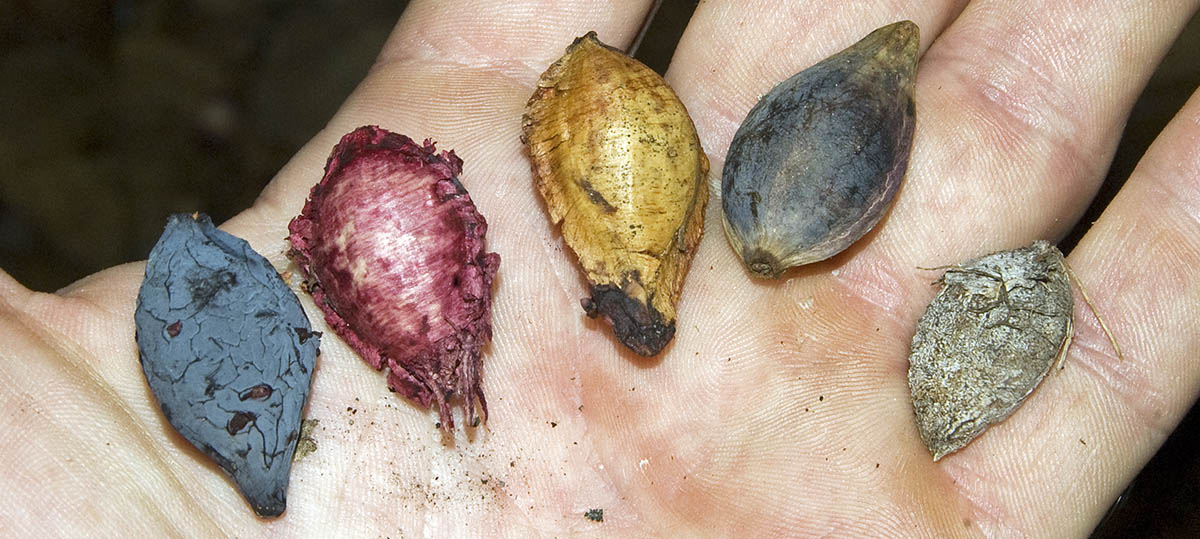 (Holloways Beach, Australia)
(Holloways Beach, Australia)Terminalia arenicola. Wide tree, with layered ‘pagoda’ branches. Glossy rounded leaves, widening at end, at end of branch. Sometimes deciduous in late dry, but not as obvious or red as T. catappa and T. seriocarpa. Cream flowers on a spike. Fruits are small, slightly flattened, canoe-shaped with a beak at one or both ends; ripen to blue-purple with whitish ‘dust’. Often seen littering ground along tropical coasts. Endemic to tropical coasts of Queensland. Has also been extensively planted along beaches in that region.
Order Sapindales
Family Meliaceae
This family has some 600 species found throughout the tropics of the world, with only a few in temperate areas. Some species grow simple leaves, but many have compound leaves, commonly divided pinnately or binnately, with the leaflets being opposite and having terminal leaflets. The fruits often split open to reveal seeds with a colourful aril. The family includes some important timber trees, including various Mahogany and Cedar.
Xylocarpus spp. ‘Cannonball Mangroves’
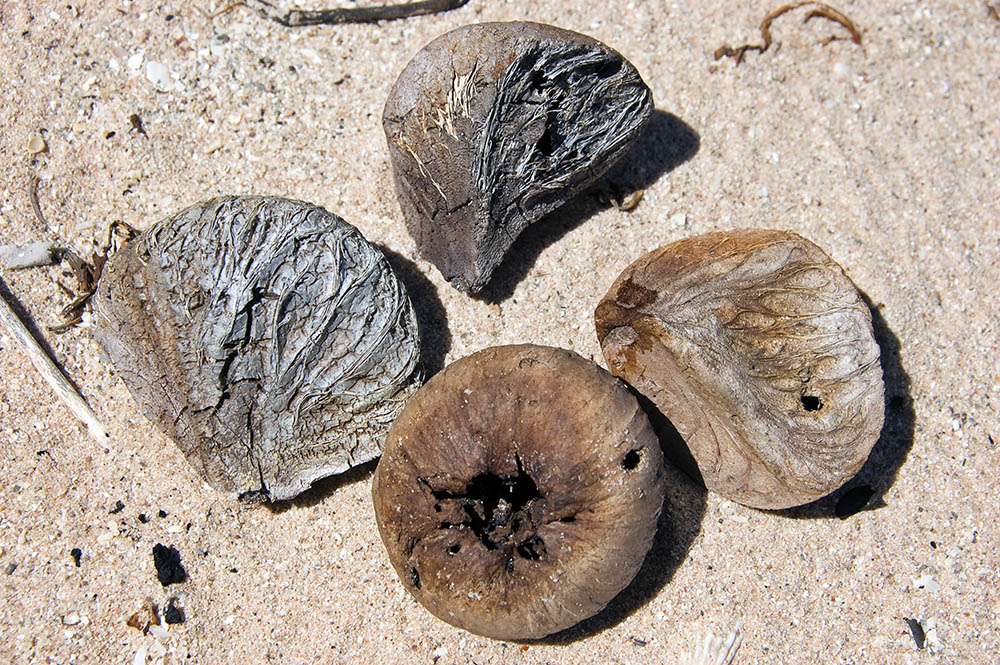 (Kimberley, Australia)
(Kimberley, Australia)These mangroves are also called the ‘Cedar Mangroves’. The leaves are compound with small opposite leaflets, with obvious yellow venation and dark thickening at the stem. The flowers are small and white or pinkish. These are followed by huge, round ‘cannonball’ fruits. They begin as large round green woody balls. They then turn brown and may break up (dehisce) into parts while still on the tree, or fall and explode into many pieces if they hit a hard surface below. These angular wedges are frequently found washed up on beaches along the tropical Australian coast. They are often called ‘monkey puzzle’ nuts; the angular pieces never quite fit back into the original shape again.
Order Malvales
Family Malvaceae
There are over 1000 species traditionally placed in this family, but as it now includes the previous families Sterculiaceae, Tiliaceae and others, it has two or three times that number. The most well known species in the original family are the cotton bush and the garden ‘Hibiscus’. The two following similar looking species are among the most common plants along the tropical Australian seashore: Thespesia populnea andHibiscus tiliaceus. Both species occur in the same beachside habitat, and have similar heart shaped leaves and large flowers with overlapping petals. However, leaves of the Hibiscus are paler underneath and much more developed lobes, and the flowers have protruding red tips from the top of the central column, which Thespesia lacks.
Thespesia spp.
There are 13 species in this genus.
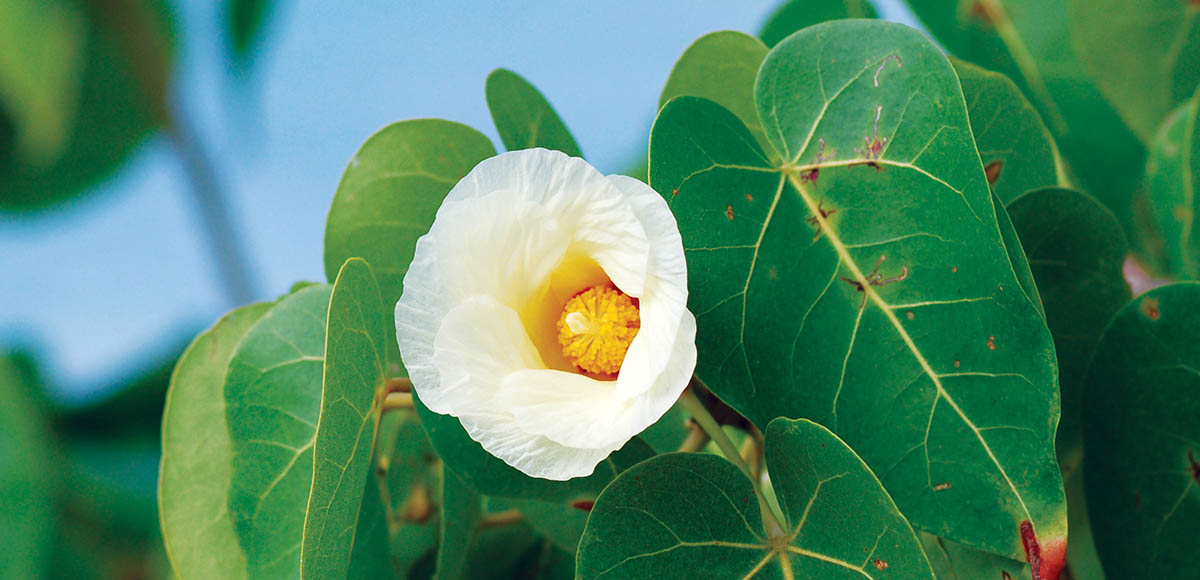 (Australia)
(Australia)Thespesia populnea, Thespesia populneoides. Short but spreading tree with large heart-shaped leaves. Large white or yellow flower with overlapping petals, that turns orange or red. Fruit is light and woody, shaped like a closed bowl, coloured a burnt brown, and can be found on beaches. Plant is found on beachside habitats, around much of the tropical Indo- Pacific.
Hibiscus spp.
There are over 300 species in this genus.
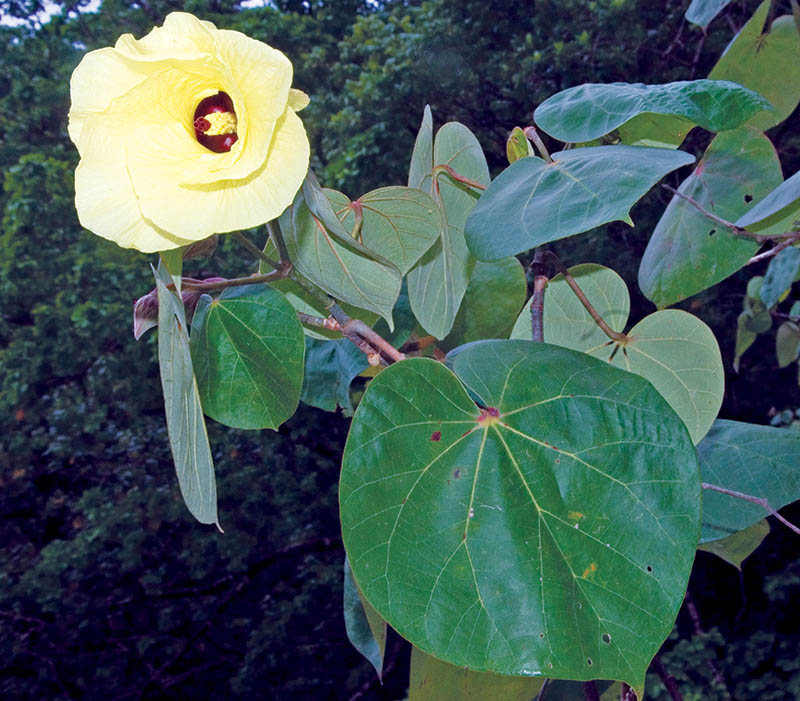 (Cape Tribulation, Australia)
(Cape Tribulation, Australia)Hibiscus tiliaceus, ‘Cotton- wood’, ‘Beach Hibiscus’. Short but spreading tree. Large, heart-shaped leaves, paler green underneath, with well developed lobes that almost touch and surround where stem attaches. Produces large yellow flower that usually only lasts a day, goes red, then drops. Can be common on beach, along edge of coast rainforest and mangroves. Flowers often seen floating on surface of water at river mouths. Fruits are pointed; when open are star shaped. Found along tropical wetter coasts all around the world.
Heritiera spp.
This genus has about 7 species found throughout the old world tropics of Africa, Asia and the Pacific (Hyland et al 2002).
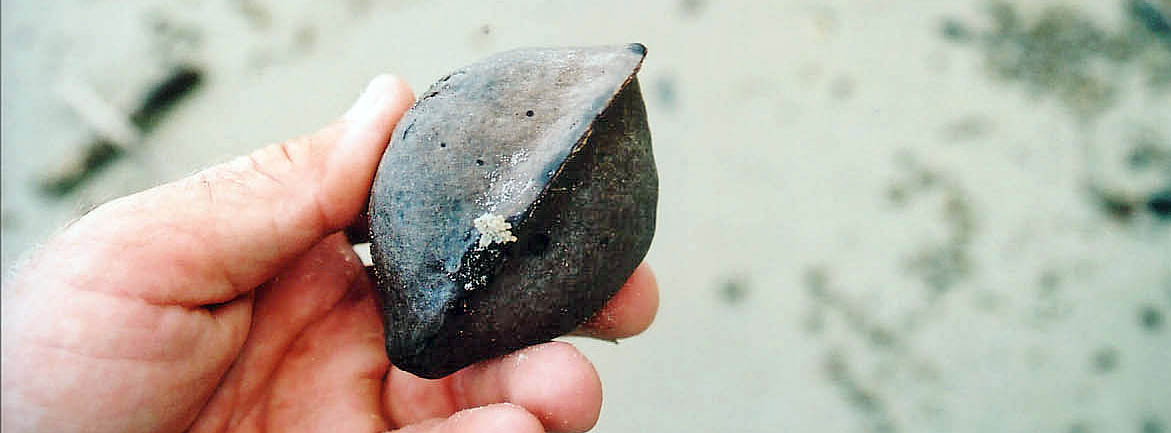
Heritiera littoralis, ‘Looking Glass Mangrove’. Mangrove tree with a distinctive white-grey pale trunk. Usually develops winding, ribbon-like buttress roots. Dark green leaves are a distinctive pale silver colour underneath, thus supposedly resembling a ‘looking glass’ mirror. Tree is usually found within mangroves in wetter tropical areas, rather than on beaches, but the fruit is a very common piece on tropical seashores. Fruit is a distinctive large oblong woody pod with a ‘keel’; however, as the fruit floats with the keel up, this acts as a sail. Wide range; found in mangrove habitats throughout the tropics of Africa, Asia, Australia and the Pacific.
Order Caryophyllales
Family Amaranthaceae (including Chenopodiaceae)
This combined family now contains several thousand species. The traditional chenopod group contains many small succulent shrubs and herbs of saline areas, from desert regions to tidal marshes. It also contains the beetroot.
Kali (some previously Salsola) spp.
There are perhaps 100 species worldwide of Salsola, manly native to saline areas of Africa and Asia (the name Salsola means ‘salted‘). More than 20 of those species have been split off into the genus Kali. Several species have been introduced, including the ‘tumbleweed’, into America, and the following species from Asia into Australia.
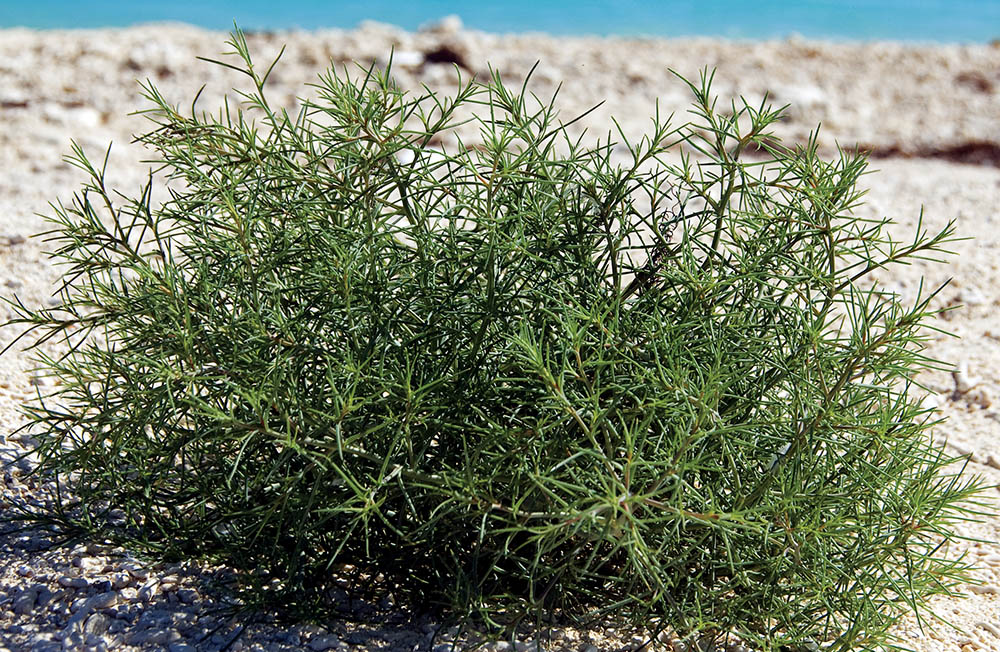 (Lacepede Islands, Australia)
(Lacepede Islands, Australia)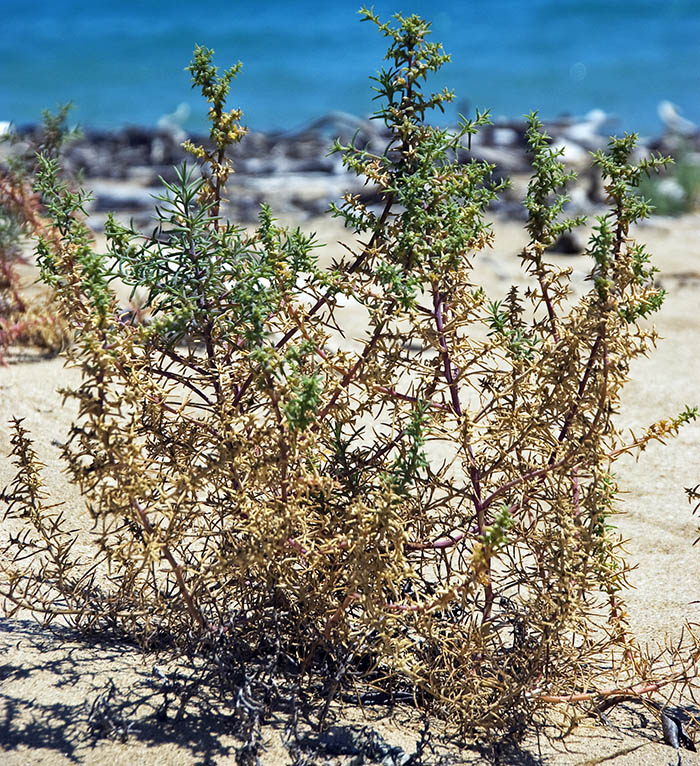 (Lacepede Islands, Australia)
(Lacepede Islands, Australia)Kali (tragus?), ‘Roly-poly’, ‘Tumbleweed’. ‘Buck-bush’. Small shrub. Greyish green stems, purplish on coastal specimens. Small, thin, leaves with sharp points. As it gets older, goes from a shrub shape to more of a round ball, then may break free from roots and roll along, scattering its seeds as a ‘tumbleweed’. Found in saline areas, from desert to coastal sand dunes. Found mainly in tropical Asia; thought to be a pre-European introduction to Australia.
Family Nyctaginaceae
This family contains almost 300 species, found mainly around the tropics of the world. It’s most famous member is the Bougainvillea, introduced from South America and cultivated in lowland tropical gardens around Australia.
Pisonia spp. include 'Birdcatcher Trees', 'Devil's Claws Trees'
This genus contains over 20 species found throughout the tropics of the world. The fruits in these plants produce exudate, and thus stick to animals to aid dispersal. This results in a strange ‘relationship’ between the some coastal species and seabirds. Birds such as Black Noddies nest in the branches of Pisonia trees, using the large leaves as nesting material. But they may become covered in the sticky fruits, which aids the tree in dispersing its seeds; however, the bird may get so stuck it can’t fly. It is thought the dying bird then provides some nutrients for the seedling to grow within. These bizarre circumstances gives rise to various names such as ‘Bird-trapping tree’ or ‘Bird Lime Tree’.
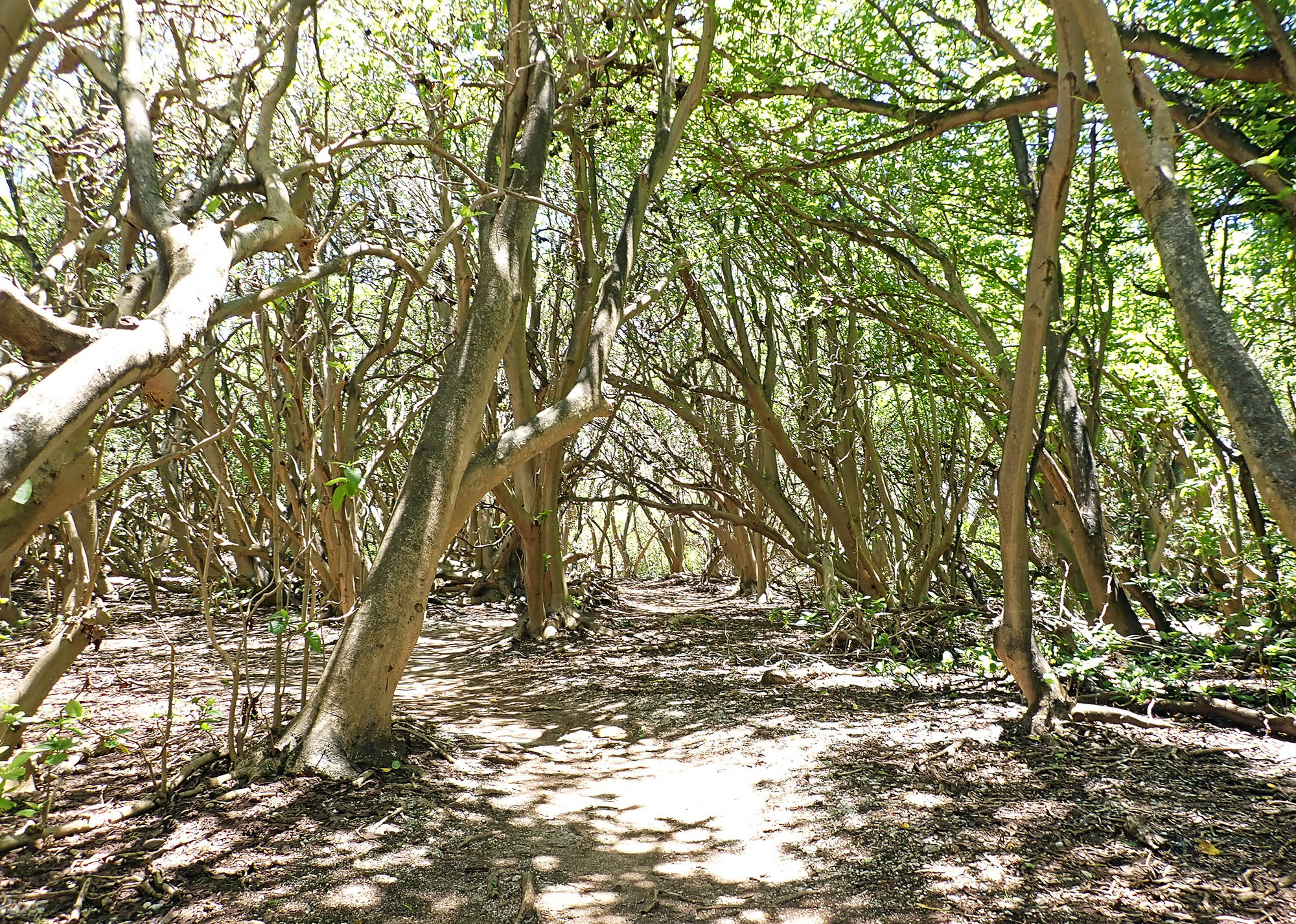 (Lady Musgrave Island)
(Lady Musgrave Island)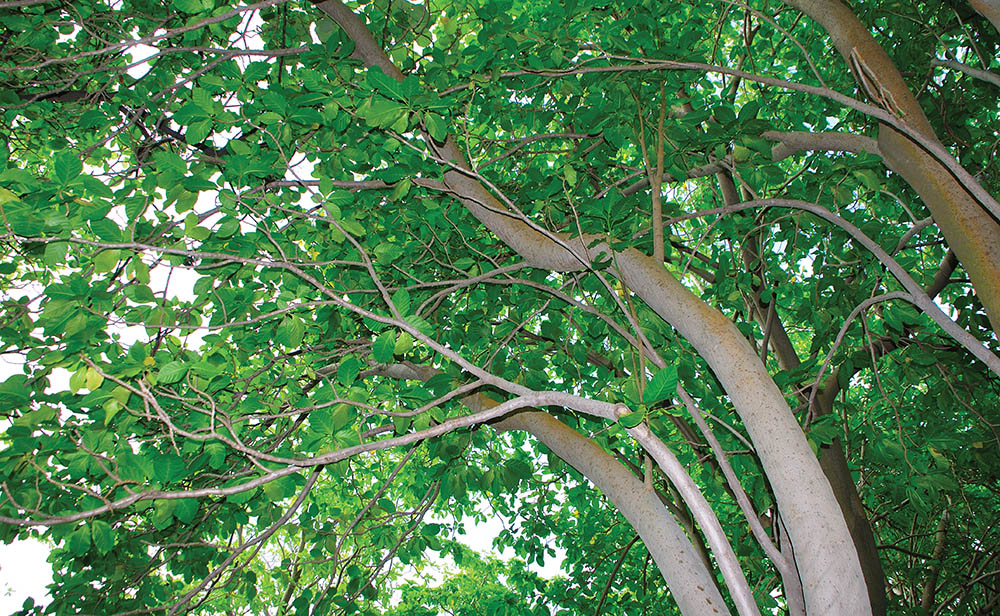 (Papua New Guinea)
(Papua New Guinea)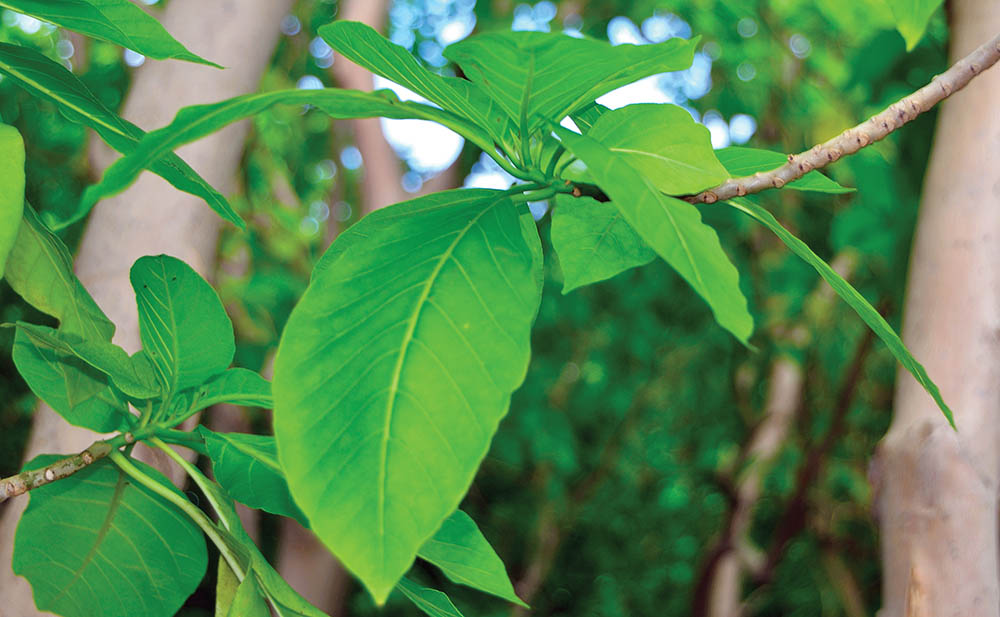 (Papua New Guinea)
(Papua New Guinea)Pisonia grandis, ‘Pisonia Tree’ Tree or shrub. Usually grow in their own forests, with distinctive whitish trunks growing tall and slim but often curving over. Large leaves, appear in a whorl, with distinct white venation, and stems have small round scars from where previous leaves grew. Small greenish-white flowers produced in an umbel. The strange fruits also in umbel; they are green and finger-like in shape, with rows of very sticky lumps. These stick to seabirds. Grows only in tropical coastal situations, but seems most common on small coral cays (or atolls in the rest of the tropical Pacific), where it may grow in stands dominating an area, and comprising a type of littoral or beach forest, especially where there are breeding seabirds. Found in much of tropical Indo- Pacific.
Family Aizoaceae
This family contains about 170 species, most of which have subsucculent leaves and many of which are found in tropical coastal regions. It contains two important coastal species, Tetragonia tetragonioides ‘New Zealand spinach’ of the subtropical and temperate shores, and the species below.
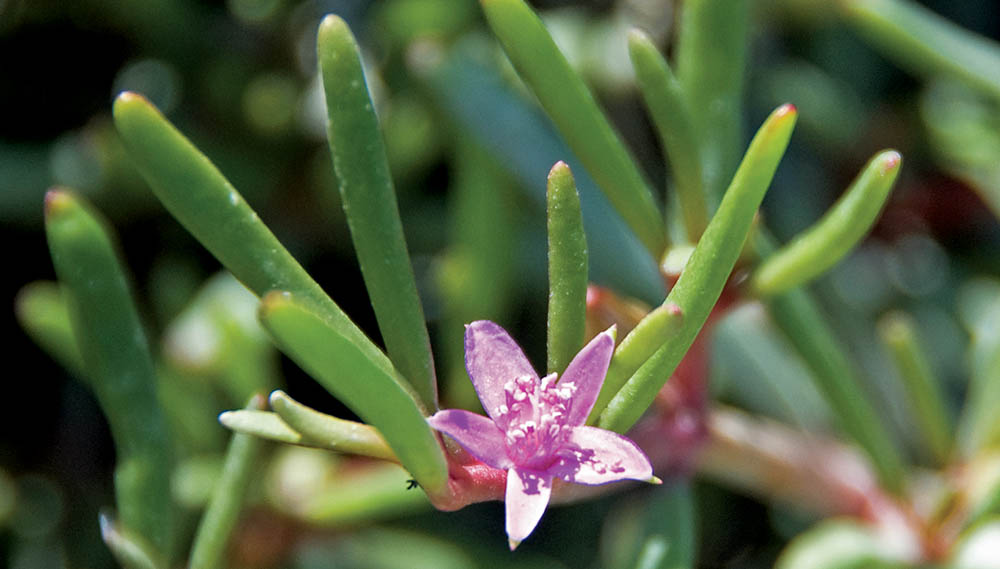
Sesuvium portulacastrum, ‘Sea Purslane’. Grows as a creeper, forming mats of growth. Erect, succulent leaves growing up from reddish stems. Small, star shaped pink flowers. Leaves are an edible vegetable after boiling, and used by Cook to help prevent scurvy in his crew (Low 1991). Grows on beaches, including dunes, and in salt marsh and other open hypersaline areas. Found on warmer coasts all around the world.
Order Ericales
Family Lecythidaceae
The species in this family often have large and spectacular flowers made impressive by a spray of many stamens, such as Barringtonia. Many fruit into hard capsules that contain seeds, as in the most famous member of this family, the ‘Brazil Nut’.
Barringtonia spp.
This is a genus of about 40 different plants found throughout the tropical Indo- Pacific region. The plants usually have large simple leaves that are clustered at the end of the branches. The flowers are often spectacular: large sprays of stamens, sometimes hanging down in racemes. The following fruits vary; they can be either fleshy or, if dispersed by fresh or salt water, large and woody.
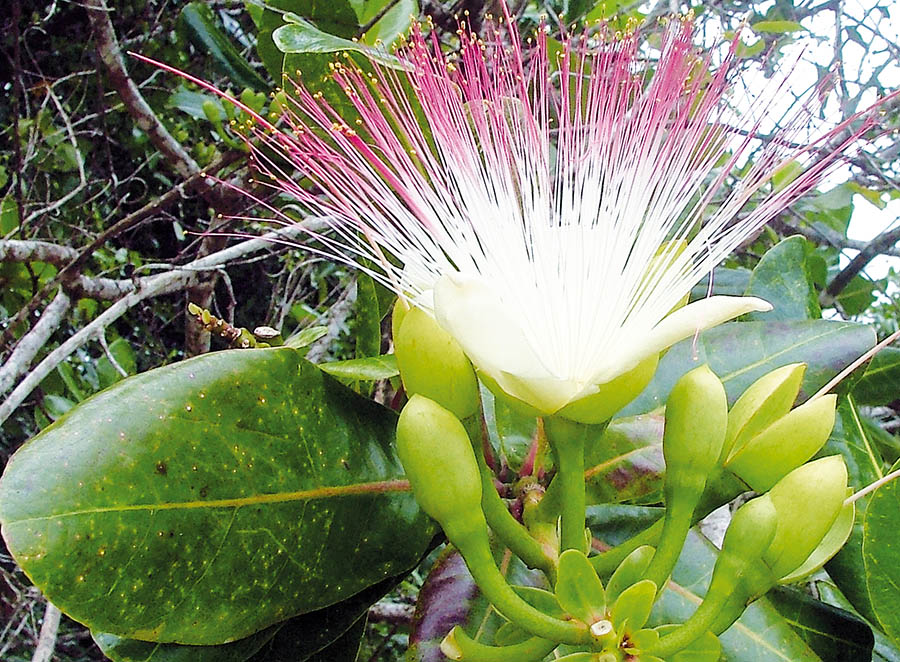
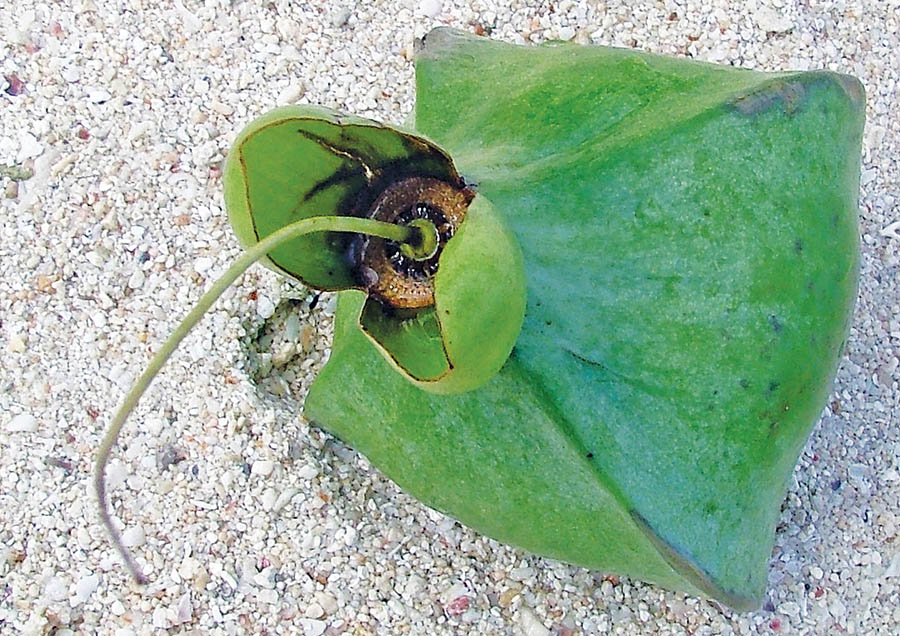
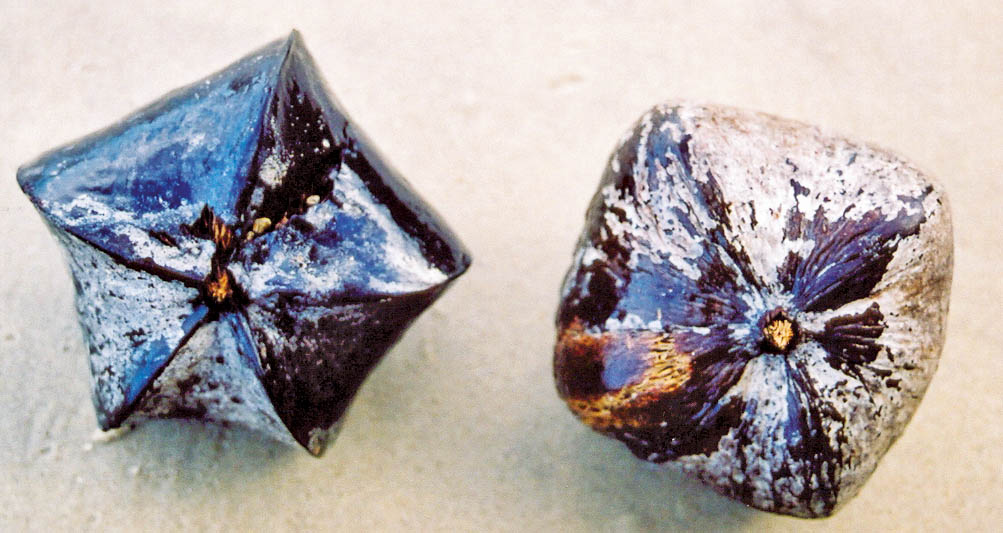
Barringtonia asiatica ‘Beach Barringtonia’, 'Fish Poison Tree', 'Box Fruit', 'Futu'. Usually short, but often wide spreading, tree. Large rounded leaves in whorl at end of branches that are typical of genus. Produce large upright flowers, many long cream stamens with pink ends. Flowers drop during day. Followed by very large woody, angular fruits, usually four ridges, sometimes five. Fruits ripen from green to brown, may be found on at either stage. The fruits and buoyant and can float for many years, and they are used as fishing floats. Once they wash ashore, and are soaked by freshwater, they germinate, thus they tend to colonize wetter tropical coasts. Widespread, being found in forest along wetter seashores throughout tropical Indo-Pacific. The local name Futu gave rise to the island name of Futuna. The seeds are ground down and used as a 'fish poison', the saponins inside interfering with the oxygen intake of fish and stunning them to the surface to be collected.
Family Myrsinaceae
This family has about 1000 species found throughout the warmer parts of the world. The flowers are often arranged in umbels. The stamens are located opposite the petals. The following fruits are usually fleshy with one seed.
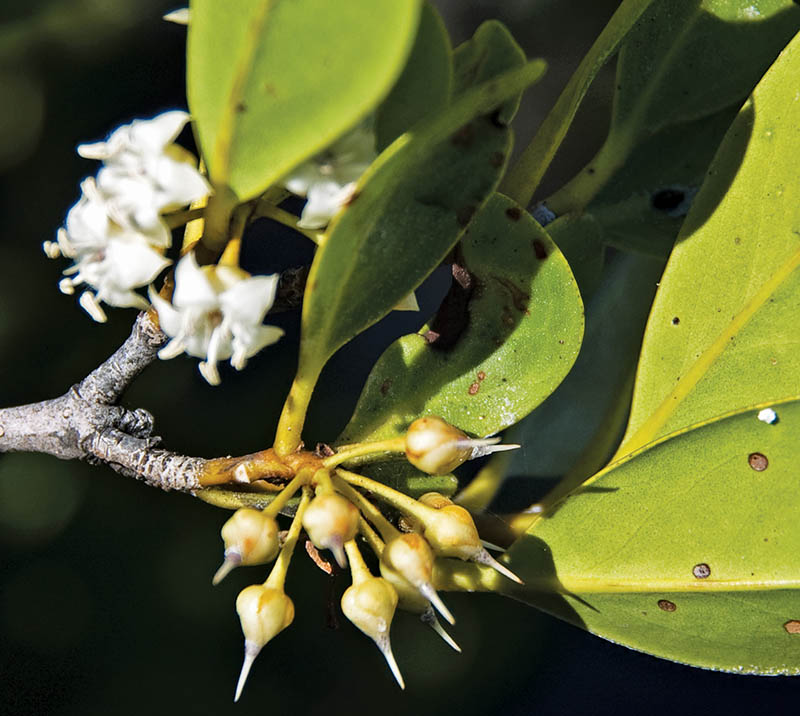 (Kimberley, Australia)
(Kimberley, Australia)Aegiceras corniculatum, ‘River Mangrove’. Usually grows as a small tree or more commonly a shrub. Flowers and fruits in an umbel. Flowers begin with pointed buds, then open up to reveal small white flowers with strange smell. These develop into curved horn-like fruit. Often found on beach sand, such as on spits, on the edge of mangroves. Found across northern Australia, and throughout tropical Asia.
Order Gentianales
Family Apocynaceae/Asclepiadaceae
This family has over 5000-6000 species around the tropics of the world, with some extending into temperate regions. Their most distinctive feature is the presence of milky white latex in broken branches and leaves. The family includes tropical ornamentals as ‘Allamanda vine’ and Hoya.
Cerbera spp.
This Old World genus contains 7 species that are found from Madagascar, across tropical Asia and into Australasia. Many species produce colourful and fleshy fruits. These attractive fruits have sap when cut and many species are toxic to humans. The seeds within many of these species, and relatives in the same family, have a distinctive stringy exterior, and are frequently washed up on beaches.
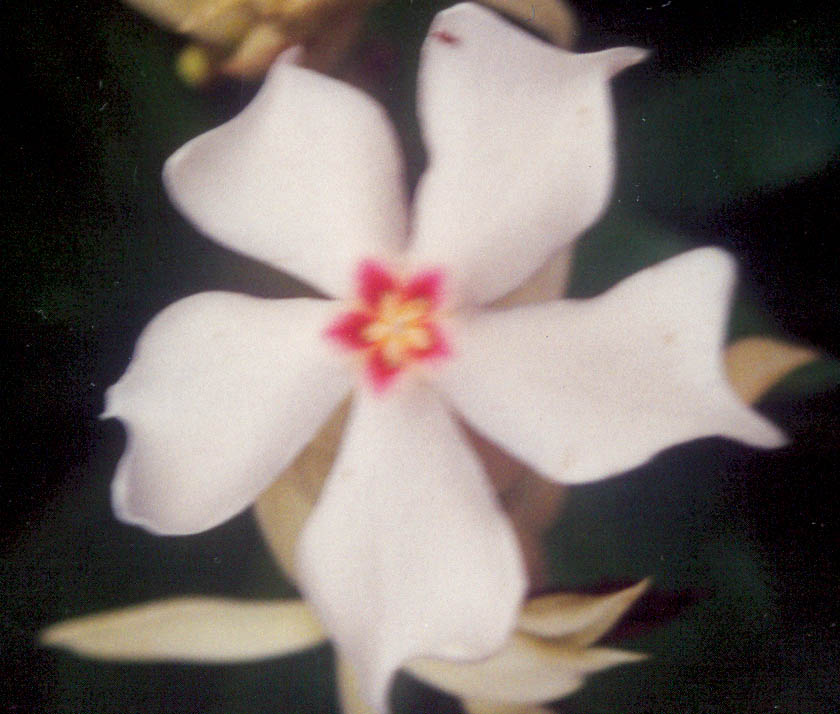
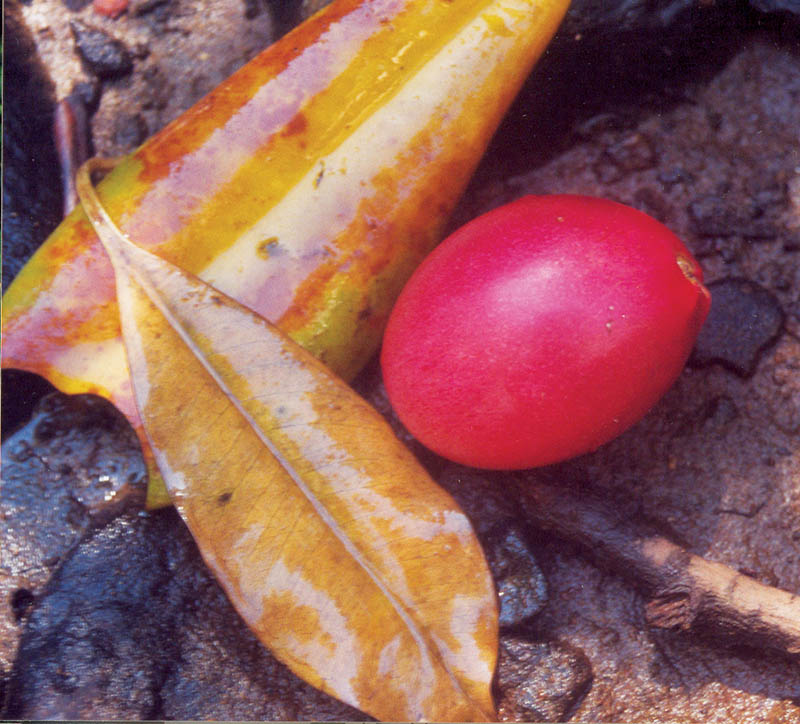
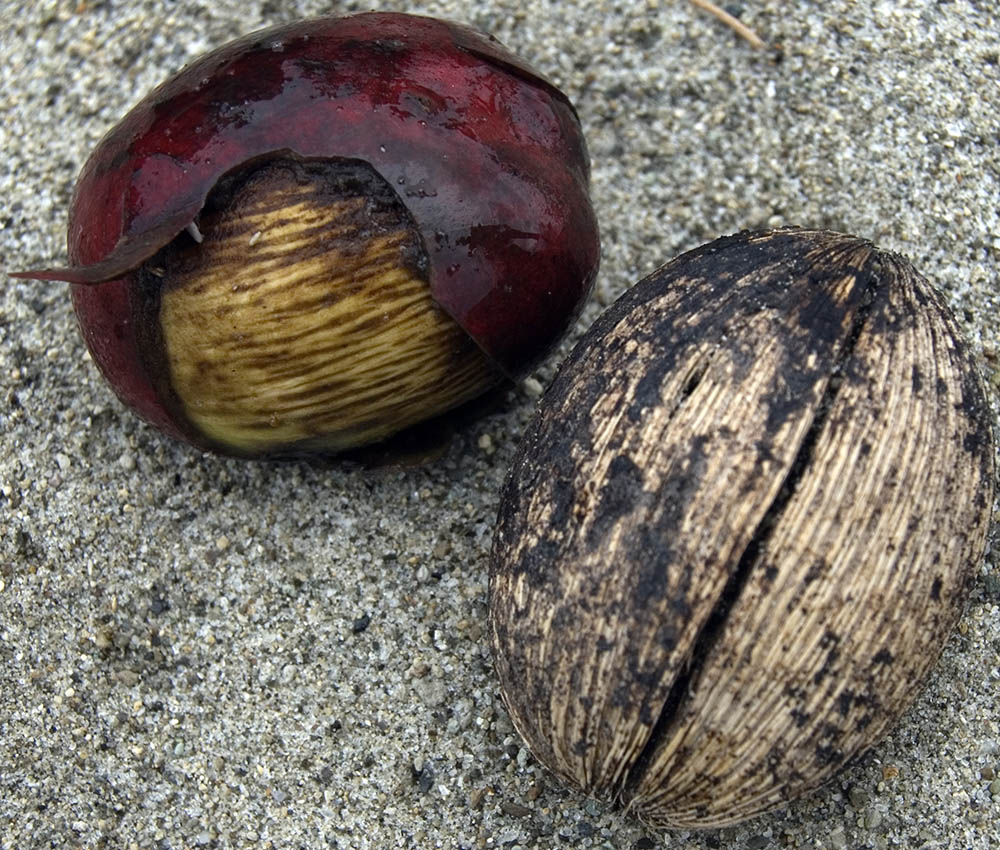
Cerbera manghas, ‘Dog Bane’, ‘Rubber tree’. Tree. Produces beautiful large flowers that are white with a red centre and have strong pleasant scent. Followed by large egg-shaped bright red fruits. Like other Cerbera, single, large seed with longitudinal lines, frequently washed up on beaches in tropical east coast. Tree usually grows in forest on beach from tropical Australia up into Asia.
Order Rubiales
Family Rubiaceae
This is one of the largest of all flowering plant families with over 7000 species. They are found mostly in the tropics of the world, but are also represented in the subtropical and temperate regions. The leaves are usually either opposite to each other, or arranged in whorls. This family provides also provides another product that without which, this website would not have been written: coffee.
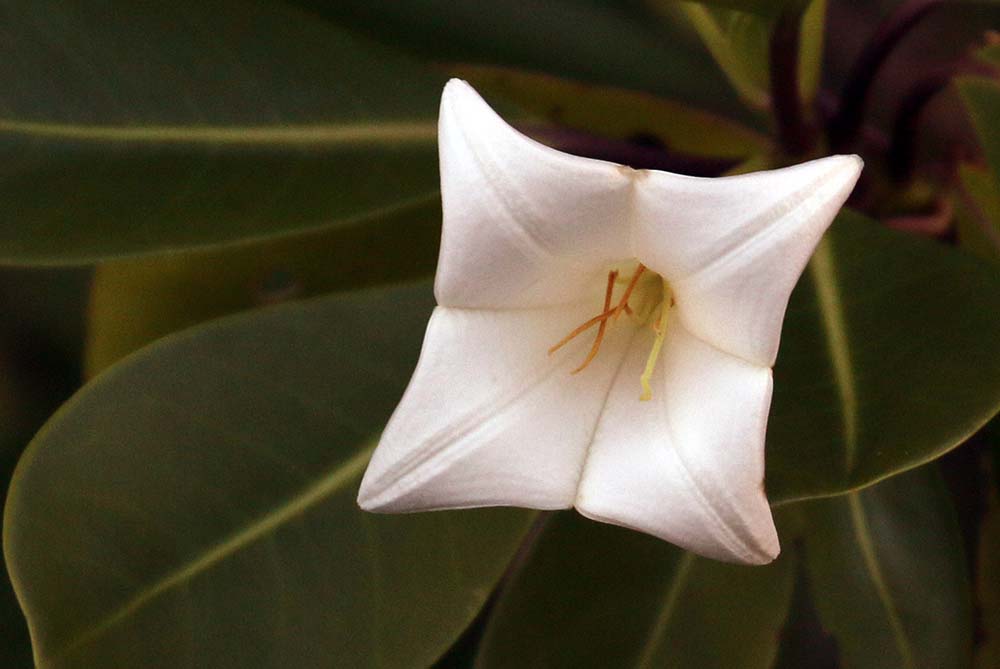 (Palau)
(Palau)Bikkia. The flowers of this genus are distinctive in their almost square-like shape created by the four triangular petals fitting together. These plants are usually found growing on limestone along tropical seashores. The 10 or so species occur on islands in the western tropical Pacific.
Guettarda spp.
There are about 80 species in this genus. They have a distribution across the tropics of the world. The genus was named after a French botanist, geologist and naturalist Guettard.
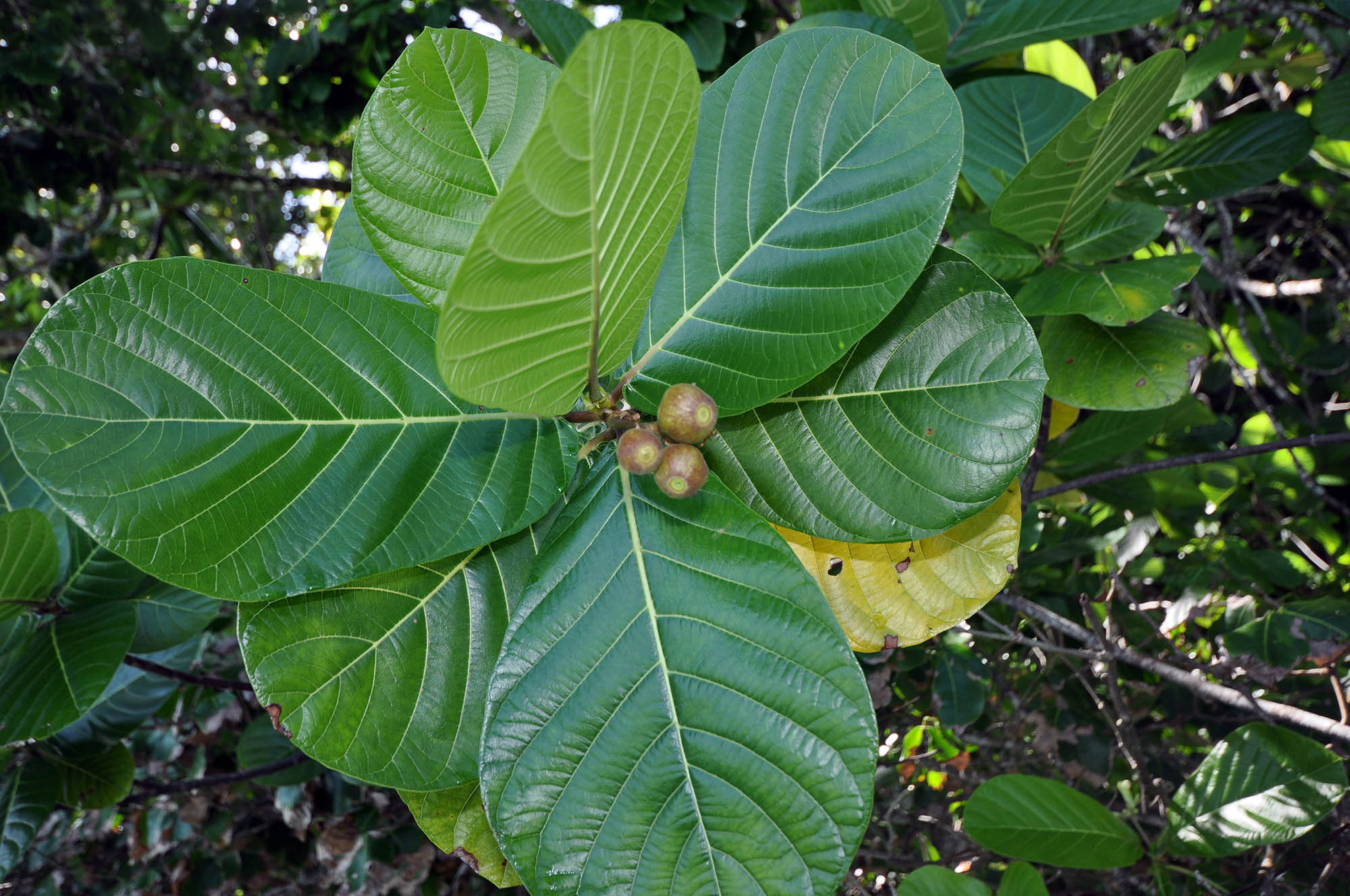 (Marovo Lagoon, Solomons)
(Marovo Lagoon, Solomons)Guettarda speciosa ‘Sea Randia’, ‘Zebra Wood’. Short tree or shrub. Very large light green leaves with yellow venation, usually bunched at the end of branches. Develops small fragrant tubular white flowers in warmer months; specific epithet speciosa means showy or beautiful (Scarth-Johnson 1999). Flowers are followed in winter by hard, round, slightly flattened fruits with a persistent calyx represented by distinctive ring on top. Fruits remain green on the tree for some time before ripening to brown. Fruits are dispersed by the ocean, and when found on shores are often just a ball covered in matted threads. Large leaves were used by Australian aboriginal and other Pacific peoples for cooking and holding food (Brock 1997). Usually found on sandy or rocky beaches just above the high tide mark, behind mangroves or on the edge of littoral forests on tropical islands and coastlines. Range is much of tropical Indo-Pacific.
Order Lamiales
Family Lamiaceae/ Verbenaceae
Clerodendrum/Volkameria spp.
These plants are usually seen as shrubs or small trees. Species in this genus can be found in the adjacent woodlands as well as the rainforest and sometimes growing right on the beach sand. The seashore species usually have white flowers with 5 petals and very long, protruding, almost string-like stamens. They produce marble round fruits presented on a bright red star-shaped, flower-like bract.
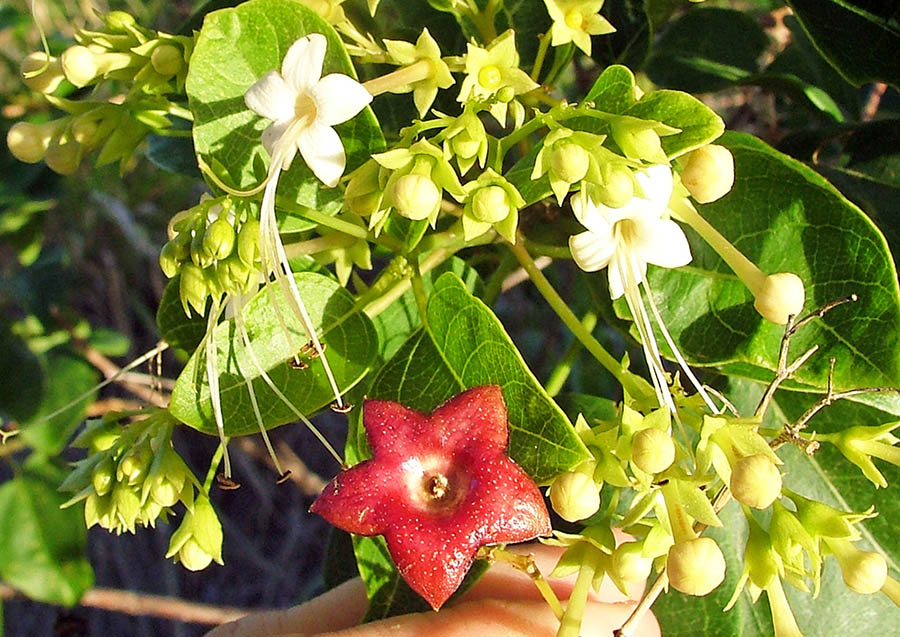 Clerodendrum longiflorum (Lizard Island, Australia)
Clerodendrum longiflorum (Lizard Island, Australia)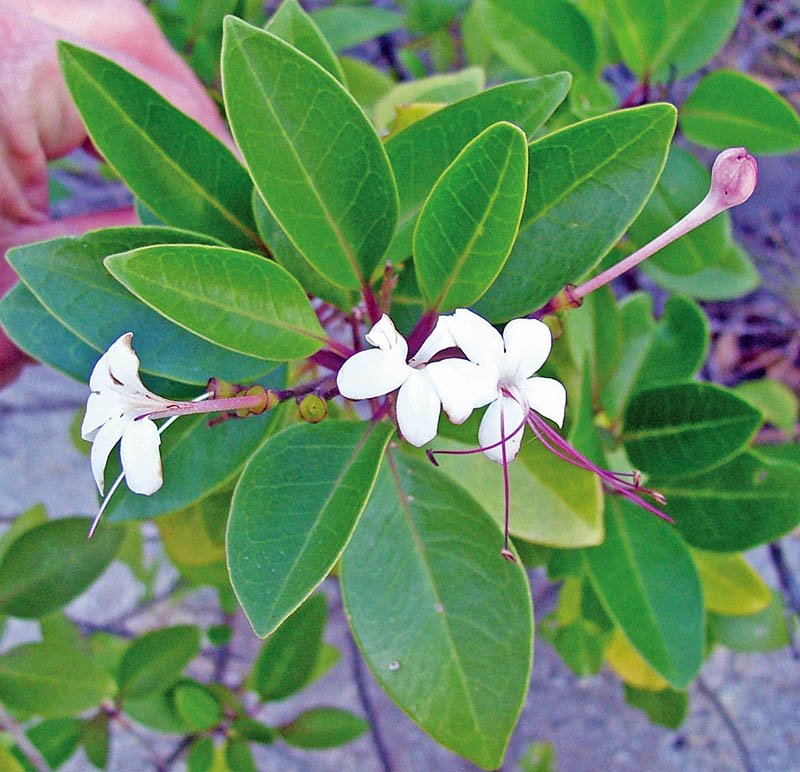 Volkameria inermis (Lizard Island, Australia)
Volkameria inermis (Lizard Island, Australia)Avicennia spp.
There are several species in this genus, and they are all mangroves.
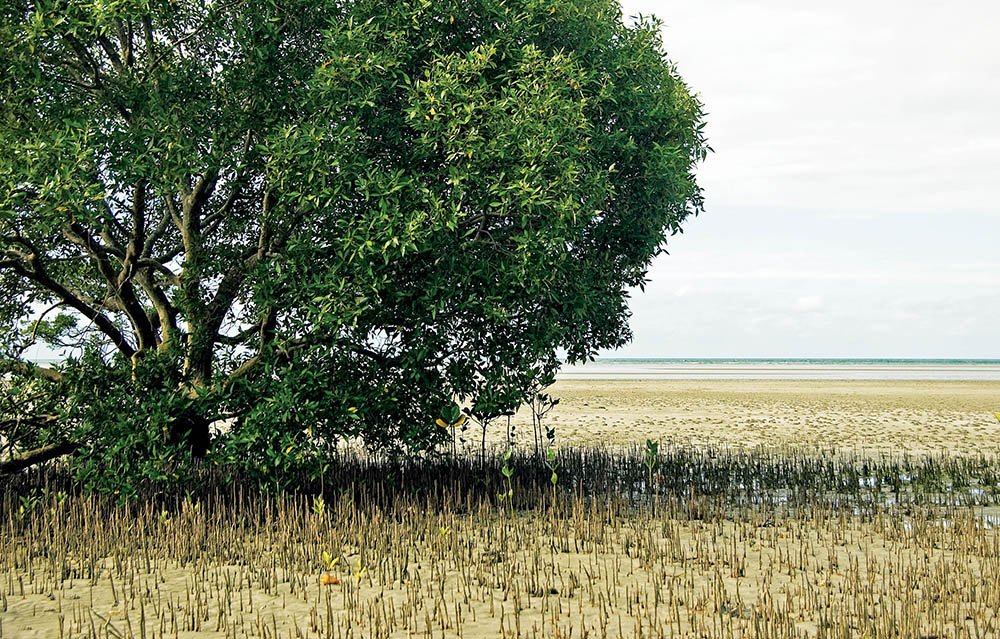 (Cowrie Bay, Australia)
(Cowrie Bay, Australia)Avicennia marina, ‘Grey Mangrove’. Usually a short, spreading tree. Named because of its generally grey bark, although this can vary from white to almost greenish, usually smooth with some papery peeling. One of tree’s most distinctive features is its roots: small, thin and peg-shaped ‘snorkel roots’ called pneumatophores that stick up out of the surrounding soil. Leaves are rather long and thin and coloured a light green with a pale underside. Underside has many tiny glands that exude salt, thus they are salty to the taste. Flowers are smallish and orange. Followed by greenish-yellow, slightly furry fruits. Usually found on the seaward side of mangroves, and thus frequently on tropical beaches.
Order Solanales
Family Convolvulaceae
This is a large genus with many introduced and native species. The leaves are usually heart shaped. Flowers can be white, red or orange, but the best known are blues and purples. They are normally deep tubular flowers with large spreading petals joined together to form the familiar ‘morning glory’ flower. As a vine, they grow in the rainforest canopy, but are usually only noticed by humans on the edge of the forest.
Ipomea spp. ‘Morning Glory’
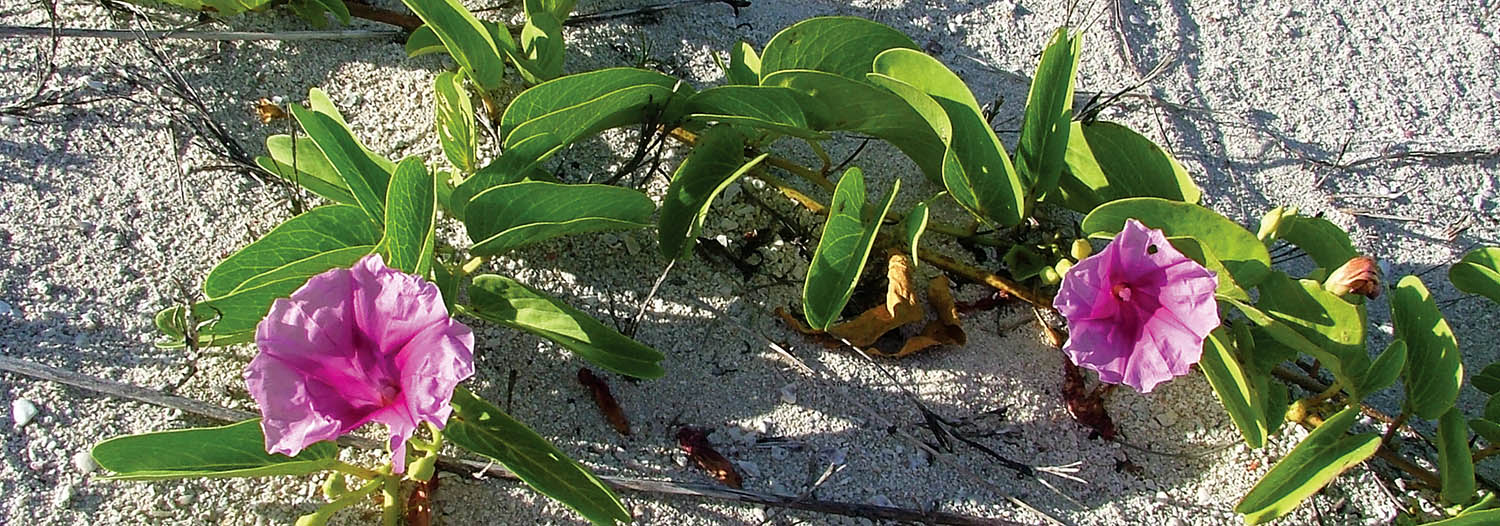 (Kimberley, Australia)
(Kimberley, Australia)Ipomea pes-caprae, ‘Goats Foot Morning Glory’. Vine that crawls along beaches, across sand or rocks. Leaves are shaped like a hoof. Large purple pink flowers. One of most common plants of the tropical Indo-Pacific beach.
Order Boraginales
Family Boraginaceae
There are some over 2000 species in this family. The leaves are often covered in small stiff hairs that may give it a rough feel. The flowers usually develop in umbels.
Cordia spp.
There are 250-300 species in this genus, named after a German professor from 500 years ago. They often have heart shaped leaves, and as they are sometimes rough to the touch they may be known as ‘rough leaf’ or ‘sandpaper plants’. The flowers grow in umbels, with most species producing small, white flowers, although the best known species, the ornamental Cordia sebestena ‘Scarlet Cordia’ has large, red flowers. The small round fruits often develop from a persistent green calyx at the base. Some have fruits that are sticky when squashed, thus another common name of ‘glue berries’.
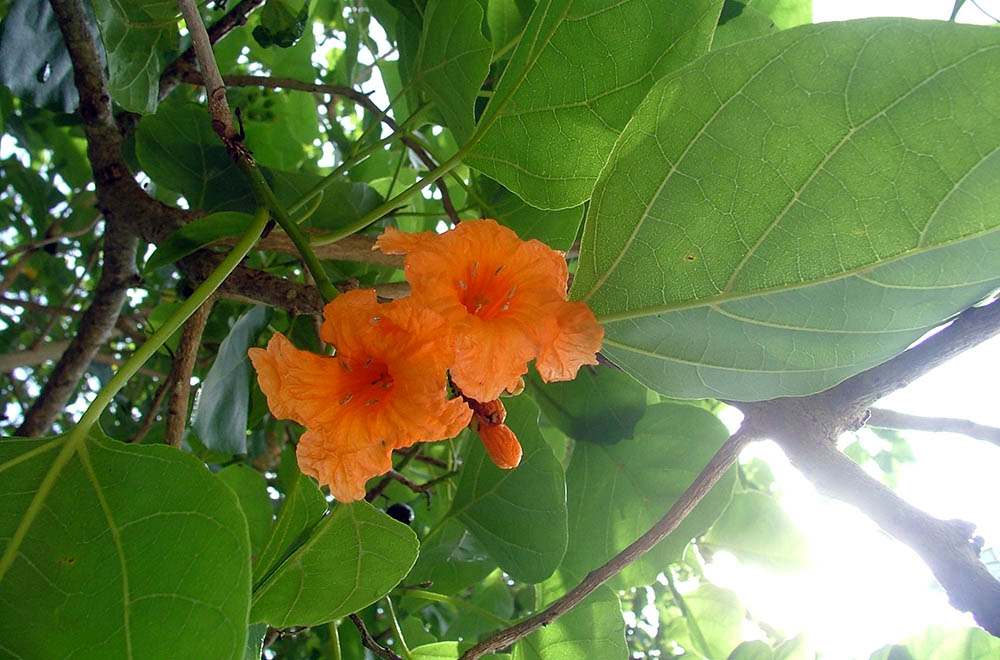 (Papua New Guinea)
(Papua New Guinea)Cordia subcordata ‘Trumpet tree’. Grows as shrub or small tree. Large, heart-shaped leaves slightly rough to touch. Flowers attractive; orange, with six crinkled petals. Fruit is woody, round, brown, few centimetres across, develops in 3 pointed persistent calyx. Inside is harder shell with several tiny edible seeds. Found in tropical forests when on edge of seashore, especially on islands, throughout tropical Indo-Pacific.
Argusia spp.
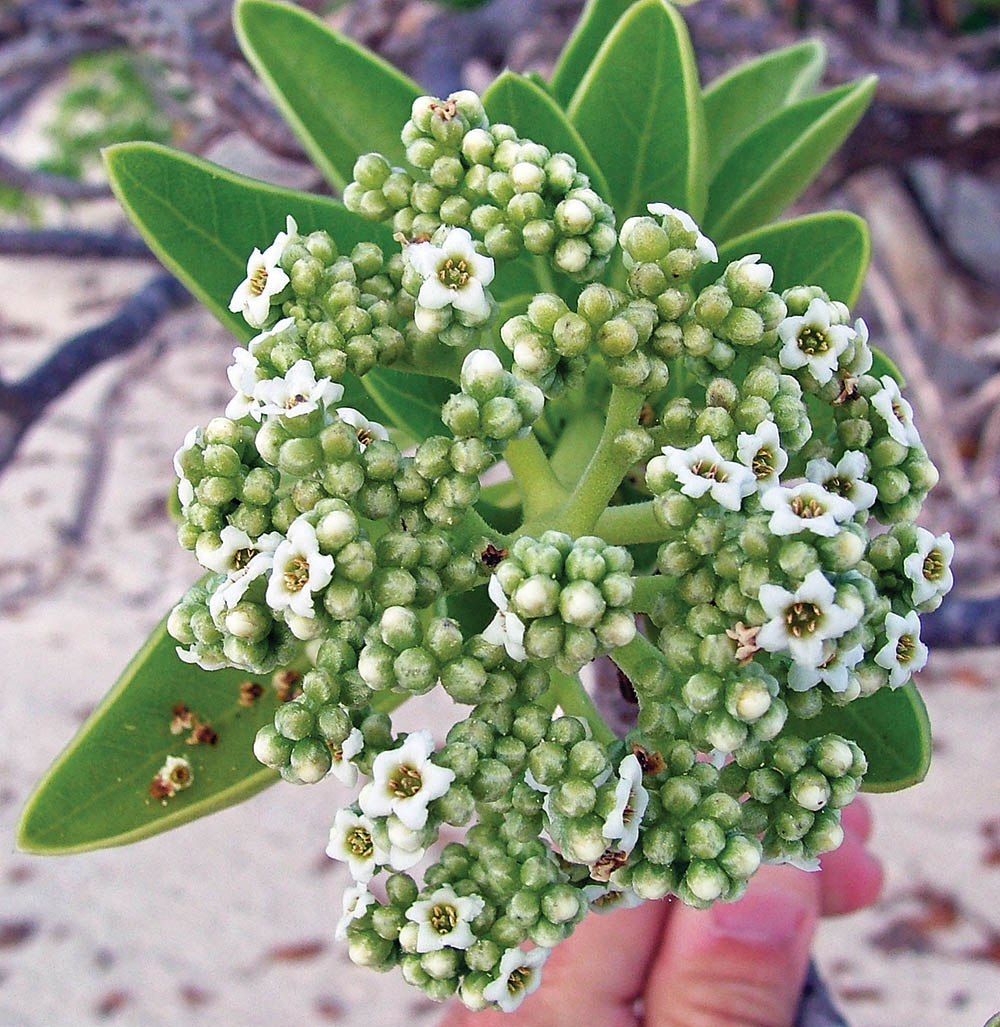 (Magra Island, Australia)
(Magra Island, Australia)Argusia (previously Tournefortia argentea/Messerschmidia) argentea ‘Octopus Bush’. Grows as shrub. Soft, silvery leaves. Large col- lections of small white flowers arranged in a tight cauliflower like head. A common shrub of the sandy coast throughout tropical Indo-Pacific.
Order Asterales
Family Goodeniaceae
This family has almost 400 species of mainly small plants, such bushes with simple and alternate leaves, or herbs with leaves that rise from the base of the plant. There are usually five joined petals which form a tube that is split on one side, resulting in an irregular flower. The seeds are usually small and flat and often surrounded by a wing (Urban 2001). These plants are found mainly in dry and sclerophyll habitats primarily in Australia, with a few species extending into South-east Asia and the Pacific.
Scaevola spp. ‘Fan flowers’
The flowers in this genus are unique, having the 5 petals on one side of the flower and not the other, with the name Scaevola meaning ‘left-handed’. This is in reference to the legend of the Roman soldier Gaius Mucius, who when captured in 507 BC and about to be killed by Lars Porsena, proved his bravery by thrusting his right hand into a fire. He was then freed, and thus become known as Scaevola, the ‘left-handed one’.
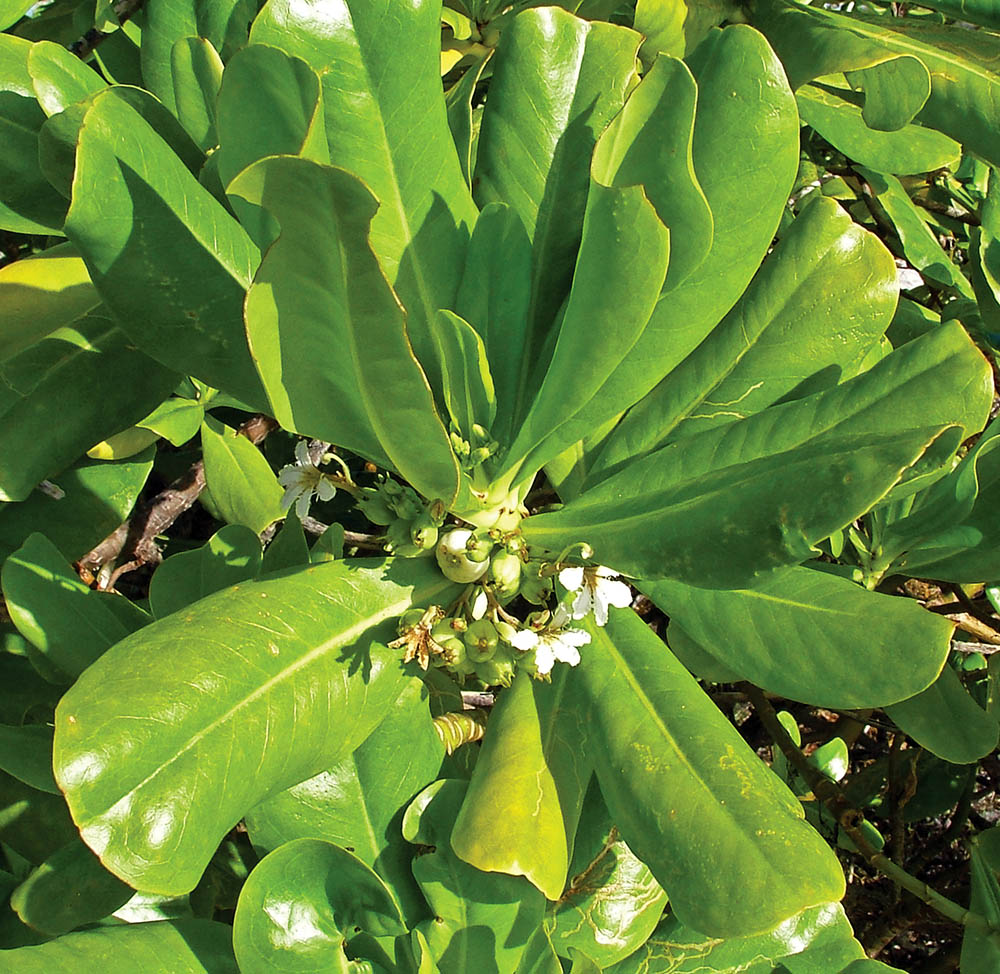
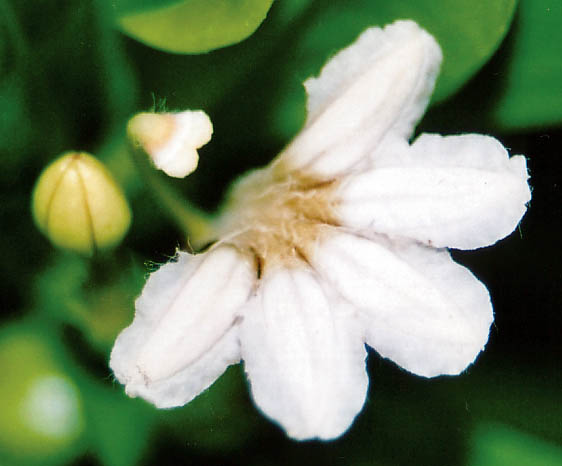
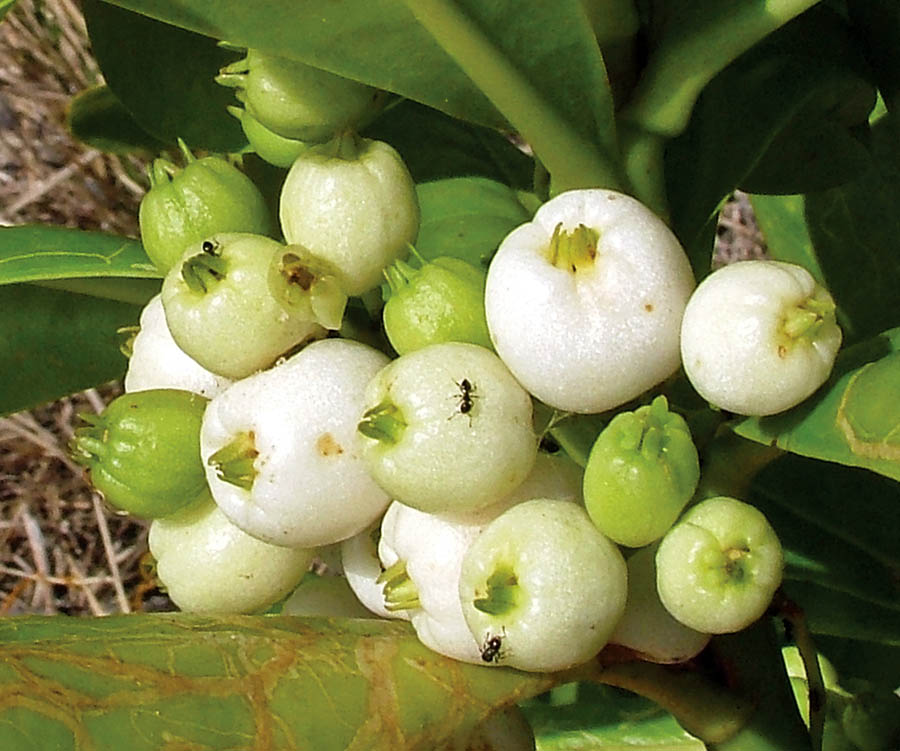 (Lizard Island, Australia)
(Lizard Island, Australia)Scaevola taccada (formerly S. sericea), ‘Sea Lettuce’, ‘Cardwell Cabbage’, ‘Pipe Tree’. Usually grow as a shrub or small tree. Large, light green glossy leaves that widen to a rounded tip, and grow out spirally. Flowers are white and slightly hairy, with five petals splayed out distinctly on one side of the flower. Appear at many times during the tropical year. Following fruits are small, white and fleshy. Found on seashores around tropical Indo-Pacific: very common on tropical islands. Several recorded uses by aboriginals: including hollowing out smaller stems for pipes, using the juice from the fruits and leaves to treat sores, tinea and sore eyes, and using the heated leaves on swollen joints (Brock 1997, Lassack and McCarthy 1997).